|
10th April 2022 Sunday evening is here and we're logged into Board Game Arena for a night of gaming. 'Viva Las Vegan!' Or 'Millions of cabbages, cabbages for me.' 'Millions of cabbages, cabbages for free.' Err... wait...? No... that's enough of that! Las Vegan is a umm.. vegetable-themed trick taking card game? Caveat: We've only ever played Las Vegan digitally and not sure if a English language version is even available in hard copy? What's in a game?
There's fairly minimal art throughout Las Vegan. The cards feature illustrations of vegetables on a slot machine reel and the cabbage machine cards show either vegetables or numbers across 3 reels. Nothing bad but also nothing to write home about. There's no iconography to speak off, just plain and simple numbers as well as the icons for the 4 types of card. How's it play? Setup
On to play Las Vegan is played over 1-4 rounds, each round follows the typical turn structure for a trick taking game, with the first or active player playing a card and the player to the left the 'following' that play.
Endgame Las Vegan can end in 1 of 2 ways. If during scoring at the end of any round, any player's cabbage tokens (VPs.) reaches 0 or lower, it ends the game. The game will also end at the end of the 4th round regardless. Once the game has ended, players tot up their remaining cabbage tokens. Points are tallied, highest score wins. Overall
The first thing to talk about is the scoring and particularly the casino chips. The values on the chips go from -3 to +1 and obviously skew heavily towards the negative, it's even worse than that though. There are 4 double-sided chips and +1s only appear on 2 of the 8 sides (Although in some regard this is quite logical as most numbers only appear twice across the chips.), thus it's skewed both in value and probability. The golden casino chip is negative on both sides. All of this means thhat this is a game about how little you lose, minimising your losses and not really how much you accumulate. Las Vegan appears to be themed ont slot machines and one-arm bandits and maybe this is part of that theme; 'The house always wins?' Even so, it all seems negative and doesn't feel like fun. Despite my reservations about the scoring, the casino chip mechanic itself is pretty interesting. When a player gets the opportunity to deploy a chip, they'll want to try and remember what cards they and the other players have taken. E.g., if the '3' cabbage machine card is in play and a player knows an opponent has taken several 3's, they may want to put a big negative on that card to hit them. Conversely, a player may try and use a +1 if they've collected 3s this round. This is also affected by when 7s appear. The earlier that 7s appear, the more of a gamble it is using the casino chips, if they appear later, it's a lot easier to predict scoring. It's also that chips might appear right at the start or end of a round, or several may appear in single trick. Players will need to calculate and adapt when using the casino chip, remembering plays opponents make made will be helpful too. There's not too much to say about the mechanics for the actual game, which are very straightforward and about as basic as a trick taking game can get - and that's not a bad thing, it makes the game accessible and easy to learn, as well as playing fairly quickly . Las Vegan could be a good filler or finisher for the day. Having said that, the scoring mechanics feel a little clunky, counterintuitive and unnecessarily fiddly. The game's depth comes from strategies that will emerge once casino chips are starting to get played on cabbage machine cards and then players will look to how they can manipulate or win or lose tricks to optimise their scores. For me; I found the game's simplicity a little unengaging, a little too run-of-the-mill while the depth the scoring brought to the table (sic) did not add enough to make me want to play more. The negative scoring also left me feeling frustrating. Not a game for me.
0 Comments
5th April 2022 It's a Tuesday and we're at The Sovereigns with the Woking Gaming Club for some gaming goodness. 'I enjoyed Muffin the Mule.' 'You can get locked up for that.' No wait, this isn't about Muffin the Mule, its about Muffin Time. 'I enjoyed Muffin Time.' Not sure that sounds better? (Apologies for the old Goodies joke.) Muffin Time is a light, off-beat party game that's easy to pick up and player with supposedly 20 minute play time. What's in a game?
The game utilises comedic and cartoony black-line illustrations with a dash of bright colour for the borders and card titles that suitability fits the game's style. There's no iconography in Muffin Time to speak of and the game's filled with unusual or unique cards and rules exceptions. Consequently, all cards contain specific text on how they function. How's it play? Setup
On to play The objective in Muffin Time is for a player to acquire exactly 10 cards at the start of their turn. The game uses a typical turn order, at least it does at the start with the active player acting and play progressing to the left. There are 2 phases to each turn.
Endgame Play continues until any player has acquired exactly 10 cards in hand, upon which they must immediately shout 'It's Muffin Time!' If, when that player becomes the active player they still have exactly 10 cards, then they win the game! Overall
Despite being a rules-light game, there's a couple of interesting elements at play in Muffin Time. Firstly and most obviously, are the trap cards: They require players to pay attention to the behaviour of their opponents in order to trigger traps. However, there's also a higher level of play at work, where participants can try to induce other players into falling into their traps, such as my aforementioned attempts to get the other players to yawn. It add an unusual and interesting facet of playing the player and not the game to the mix. Secondly, is the action economy: Play a card or draw a card, it's a simple rule but it has an interesting effect. Essentially, playing a card gains the player whatever benefit that card gives them but it also loses them that card from their hand, thus making their goal 1 step further away. Does the benefit of playing it outweigh the cost? The answer will always be contextual, especially since some cards do stuff that's just funny and players will end up playing them just for the sake of playing them. The same quandary is actually also true of counter cards. The core gameplay is highly situational, it requires players to adapt to unpredictable turns of play and exploit events as they occur with the cards they have in hand. This is not a game of planning ahead too much. It's also bit of a silly game with some silly card actions such as 'Last player to stand up discards 2 cards.' There are also cards that may change the win condition, turn order etc. If this sort of thing is an anathema to you, Muffin Time is probably one to skip. Otherwise there's not too much to add about Muffin Time really. it's an easy to learn, pick and play party card game that can be a lot of fun if you don't take it too seriously and allegedly has a 20 minute play time and can be a good filler or finishing game. I say allegedly 20 minutes because circumstances and certain card plays can dictate otherwise - games can go on considerable longer, is that good or bad? Muffin Time can be very enjoyable but it can also outstay its welcome. So, YMMV. Don't let that put you off though. I feel that Muffin Time is good party game when played with the right mindset and is worth trying. 20th March 2022 It's a Sunday and we're logged into Board Game Arena for an evening of fun. Hanabi is a cooperative game about lighting a series of larger and larger firework displays. The catch is that everyone must rely on other players to give them clues to do so. Get it wrong though and the show could end early. Who thought fireworks could be so stressful, well... other than pets! What's in a game?
All the artwork on the cards are understandably themed after fireworks in their respective colours. For the most part it looks clear but I've found that in dimmer light, the colours can look a little weak. Hanabi makes minimal use of iconography, the cards are cleared numbered while icons are also used to designate different colours. 2 symbols are used on tokens. How's it play? Setup
On to play The objective in Hanabi is to create a stack of face-up cards for each colour by playing them in numeric order, starting with the 1 and finishing with the 5. All of this must be done without any player looking at their own cards. Players should hold their cards up with the backs facing them so that all others can see what cards they have. Players then provide clues to each other and use these clues to deduct which cards to play. Hanabi uses a standard turn structure with the active player taking a turn before play progresses to the left. The active player must perform one of the following actions.
Endgame Play continues until 1 of the following 3 criteria are met. Win: If the 5th card of all 5 stacks are correctly played, the players immediately win the game. They have achieved a perfect score of 25. Lose: If the 3rd and final storm token is flipped over, the players immediately lose, scoring a big fat 0! Deck depletion: If play progresses until the last card is drawn from the deck, all players get one more turn. After this, the game is scored and the players collectively gain a score equal to the value of the top card on each stack, thus the maximum score of a incomplete game is 24. Overall
One of the things I like about Hanabi is that it's a small, fairly easy to learn cooperative game that provides a solid challenge, it has a reasonably quick playing time and would work well as a filler game. What's interesting in my opinion are the mechanics for clues and also clue tokens as they are inextricably linked. The game does a good job of balancing the usefulness of clues with their scarcity. When giving clues, players will want and need to give clues as efficiently as possible, it takes 2 clues to clearly define what a card (Both colour & number.) is and this uses a quarter of the available clues which is a lot! Frequently that means a clue might need to have a implicit meaning attached. E.g.; the clue, "You have one green," might implicitly mean 'Play that green card!' Players receiving clues will need to interpret and deduct meaning from the information they have now been given, combining it with the information they see in other players' hands before deciding what to do. Sometimes they won't have all the information they want, sometimes they'll need to gamble on a decision. Flipping clue tokens back to their unused side can be vital to doing well, usually this will involve discarding cards and it also allows players to draw cards and put new options into play. Blindly discarding cards can be tricky though, if a 5 is discarded, there goes the chance to get a perfect score. - Not that getting a perfect score is easy, it's not! Consequently, it's sometimes a good idea to give players clues about what to get rid off. not keep. It should also be noted that like many cooperative games, luck can play a big role in Hanabi. If those lower value cards don't until later in the game, players will end up discarding higher value cards to get to them. Hanabi does have some minor drawbacks though. Having to constantly hold up cards so others can see them feels a like a little bit of a pain. The same is true of drawing new cards and remembering not to look at them. When a player is given clues about their cards, it can be a chore to remember not only what the clues are but also the location of those cards in their hand. Otherwise that can lead to some pretty devastating plays! Interestingly, the digital version of Hanabi remembers the clues for players. I also found Hanabi to be slightly frustrating, although this may be due to the behaviour of other players. It's definitely stressful watching another player not get the hint when they've given a clue. These are minor quibbles and Hanabi is a unusual and challenging cooperative game that forces players to think hard and logically, provides meaningful decisions and some solid fun: Some big gameplay delivered in a small package. Hanabi is definitely worth trying. 15th March 2022 It's another Tuesday evening with the Woking Gaming Club at The Sovereigns and we're playing Regicide Is Regicide a cooperative game about recruiting heroes from a local tavern to go fight epic battles and raid a castle against a series of bosses (Who happen to be regents!), or is it just a deck of cards? Turns out it's both. What's in a game?
Well... there's not much that can be said here. It's a game that can be played a deck of ordinary cards and that's what it look like. The official Regicide deck is nicely illustrated with some stylised and quirky fantasy themed artwork but it's still recognisability a standard deck of card. And the game's iconography, well they're clubs, diamonds, hearts and spades. You get the idea. How's it play? Setup
On to play In Regicide, players must coordinate actions in order to prevail, however, they cannot communicate with each other. During their turn, the active player uses one or more cards in their hand to attack the current enemy before then using more cards to resist the enemy's counterattack. Play then continues to the next turn and the player on the left.
Endgame Play progress until 1 of 2 conditions are met. If the players defeat the 12th and final enemy, then they collectively win. If at any time a player cannot discard enough cards to cover an enemy's attack, then the players collectively and immediately lose. Overall
On a basic level players are faced with 4 choices when attacking and how to use the 4 suits and their respective abilities when playing Regicide is vital. The advantages of each ability are contextual and players will need to learn recognise when to use which suit. Suffice to say, players will need to make use of all the suits appropriately. Of course it's not as simple as I'm making it sound. As with all cooperative games, luck plays an important part here and players will frequently find themselves lacking the cards they want, the immunity rule can also well and truly throw a spanner in the works too. This forces them to make tricky decisions or find other approaches to how they attack and or indeed manage defence. It should also be said that Regicide is a very hard game, very hard! I heard someone state that players can expect to win about 1 in 6 times but I feel this is an underestimation of the game's difficulty. We've played it numerous times and never won, we barely ever made it to the kings! Not only is the game hard off the bat, it just gets harder and harder! I would argue that the Regicide is too hard, which would be my one gripe with it. Although it's entirely possible that there's some strategy that we overlooked. Regicide has a fairly quick playtime which is in part due to it's brutal difficulty curve and could be a good filler game, although bear in mind that it definitely tests the grey matter. It's a fascinating game that condenses a fair chunk of cooperative gameplay into a deck of 54 cards and gets a lot out of it. The rules are as impressive as the game is ruthlessly hard. Regicide is a game worth trying if only to experience how such a game plays, just so long as you don't mind losing. 3rd February 2022 Thursday night gaming at Simon's came to a conclusion with the 2nd and final game of the evening; Nidavellir. Google tells me that Nidavellir might mean the wane of the moon and is derived from Norse cosmology. Protect the dwarf kingdom from the ravages of a dragon by taking on the role of a Elvaland councillor and collecting sets of cards... err... gathering the bravest army of dwarves possible by trawling pubs (I kid you not.). Where's Sneezy when you need him eh? More like boozy! What's in a game?
The cards holders and especially the royal treasure are a nice touch too. However, since they can only be easily viewed from one side, it sort of forces the game to have a strange setup where the card holders and treasure rack are along one edge of the playing area instead of in the centre with all the players along the other edges. Nidavellir also makes good use of artwork, most of which appears on the cards, they contain well detailed, good quality illustrations of different dwarfish characters painted in a sort of monochromatic watercolour style along with a dash of a single colour. Usually I'd find this kind of art a bit dull, but here it works and gives the game a distinctive look. Much of the iconography is clear but some of the hero cards have symbols which are quite small and may also need looking up occasionally. How's it play? Setup
On to play Nidavellir is an auctioning game that has players simultaneously perform series of 3 blind bids during each round. Once bids are revealed, actions are resolved in an order determined by the bids.
Endgame Play continues until the Age 2 cards are also depleted, then the game goes to scoring. Each of the 5 classes has it's own way to score VPs, suffice to say; the more cards a player has in a class, the more that set scores. Bonus VPs which can come from various sources should then also be added in. Points are tallied, highest score wins. Overall
Nidavellir does a good job of mixing set collecting with auctioning. The set collecting element is about a mixture of getting the cards you want and sometimes collecting a card just to deny it to another player. Sometimes you'll be completing to build sets and sometimes you'll want to take a card no one else does on the cheap. Pretty standard stuff for set collecting and what you'd expect. The auction mechanics offer something a little different. I have to say I'm not the biggest fan of auctioning games, I don't dislike them and I've enjoyed some of them but they're not really my jam. I've often found bidding decisions could be a little stress inducing, which is probably why some people love them so much! Nidavellir cleverly bypasses some of this with it's auction system because players never lose their bids. Instead of trying to out bid someone or bluff a bid up, players will be trying to gauge how others will bid. This requires not only watching what cards others have been collecting and trying to anticipate what they will prioritise in each bid but also paying attention to how they've been upgrading their coins. If another player has a coin that's got a higher value, it will never be possible to simply outbid them and it might not be even worth going against them and could be a good time to play that 0 coin and get an upgrade instead. There may also be other times when players want to bid low such as when all the cards in a tavern are not valuable or if they're not valuable to other players. This means that Nidavellir has 3 avenues of strategy that the player must take into account. Not only do players have to keep an eye on which dwarf cards to try and acquire, they'll want to think about creating rows as well as columns to earn hero cards which cna prove very useful. Players will also need use that 0 coin to upgrade coins - which is essentially a form of arms race that can't be ignored - unless a player thinks they can win by being last in every auction! Nidavellir is a solid game and I can't find anything to fault about it. It isn't particularly complicated but there's definitely enough depth here to keep players engaged and generally give them meaningful decisions to make. If you like auctioning or set collecting games, it's probably worth a look. If you like auctioning and set collecting games, Nidavellir is definitely worth a look. 30th January 2022 Sunday and we're at The Sovereigns for a rare afternoon of gaming and the beginning of a day of gaming. Twirl your moustache and laugh your evil cackle! It's time for Marvel Villainous: Infinite Power, a game about the poor misunderstood bad guys of the Marvel Cinematic Universe. What's in a game?
It's clear that the game's art direction draws influence from the Marvel films but wisely steers clear of actually using stills from them. Instead the art looks familiar but also comicbook-like, which means it's mostly brash and colourful. There's a lot of illustrations throughout the cards and none of it seemed bad. Marvel Villainous uses a fair amount of icons and to be honest they weren't very clear initially but the reference sheet provided meant that it wasn't an issue and after a coupe of turns it was pretty clear. How's it play? Setup
On to play In Marvel Villainous, the active player moves their pawn to a location performs an action from that new location, play then progresses clockwise to the next active player.
Endgame The first player to complete their objectives immediately wins. Overall
In Marvel Villainous, players for the most part will be concerned with advancing their own particular objective (Unless they're playing Thanos!) and will look to optimise their plays. Since a pawn cannot stay on the same location for 2 consecutive turns, players will also want to think at least a turn ahead. Occasionally the opportunity to mess with other players will arise. Players can also employ the fate deck to interfere with opponents as well but this has the chance to backfire. Having said that, players will need to keep an eye on their opponents who might be close to completing their objectives, in which case priorities will no doubt change, forcing players to decide which is most important. Thematically I think the game is strong and I like the asymmetrical play and objectives, how they follow the storylines from the related films is well done and shows some flexibility and scope in the game's mechanics. The core mechanics are pretty solid but I did have few issues with the game. The asymmetrical objectives are good, it also didn't feel very well balanced. Certain supervillains had easier objectives to complete, or so it seemed. I'm not 100% on this though I found the event cards slowed the actions down without adding any noticeable value to the game, they're just added obstacles and resolving them is identical to vanquishing enemies, only with a harder, higher strength to overcome. Consequently, it probably extended game, making it a little too long. I also found the game perhaps a little unengaging. I think this is down to how each supervillain has their own deck and that deck never changes. It means the only strategies available are the ones granted to me by the deck and it feels like the game is holding my hand. There's definitely some card synergy going on in each deck but a hand size of 4 feels like it limits that synergy and is something I feel was a deliberate decision. As result, I'm unsure of the game's longevity. I feel that the rules are a little fiddly as a result of the asymmetrical elements but ultimately, Marvel Villainous is for the most a pretty straightforward game and looks more complicated on paper than in play. This is no surprise as I'm sure it's a game meant to have crossover appeal. So, having said all of that however, I'm probably not the target audience here. Core gamers probably won't find much to get their teeth into here but for more casual players, particularly those who are fans of the Marvel films, this light-ish game might be some fun. 12th January 2022 Wednesday gaming round Simon's concluded with Mascarade, a fairly chaotic hidden role card game. What's in a game?
Mascarade's components are normal standard you'd expect from a modern game, the game's standout quality are the colourful, detailed illustrations on the mask cards and courthouse board which to me look to have a late medieval/renaissance theme. The game features a small amount of straightforward easy-to-understand iconography, having said that, the game also features a whole bunch of different roles to try and remember; which are only displayed on player guide cards. How's it play? Setup
On to play Mascarade's opening is quite unique; the initial 4 turns must always be the exchange masks action, which is understandable as it randomises the cards that were initially shown. After these 4 turns, play proceeds as you would expect, the active player takes their turn, then play progress clockwise. During their turn, the active player may perform 1 of the following 3 actions.
Endgame There are 2 criteria to ending a game. If a player acquires 13+ gold coins, they win. If a player loses all their gold, the game immediately ends and the player with the most coins wins. Overall
For a large part, Mascarade feels like a pretty standard hidden role game, what makes it stand out though is the card-swapping mechanic. During play, it's likely that players will quite quickly lose track of which character they have and announcing a card can always be risky; now that's what I call a hidden role! This can of course be remedied by taking the look at card action, but is it worth spending an entire action to do so while other players could be earning money? Maybe it's worth taking a the risk - or bluffing! Nudging players into this central dilemma is what makes it unique and interesting. Otherwise, you'll be on pretty familiar ground if you like hidden role games: Trying to work towards your goals while also trying to calculate what other players are doing or which character they have - although the randomness of Mascarade has made that trickier! It's hard to gauge a game Mascarade because like many hidden role games, it's quality is dependant on the players involved, as you tend to play the player and not the game. Like most hidden role games, Mascarade can be a bit divisive. If you don't like this style of games, you can probably give this a pass. However, if on the other hand hidden role games are you thing and particularly if you like a bit of unpredictability in your game, then Mascarade is definitively worth a try. 8th December 2021 The next game of Wednesday afternoon gaming on Board Game Arena was 7 Wonders: Architects, which is essentially a 'spin-off' of and at least a little thematically similar to the titular 7 Wonders drafting game. Like it's ancestor, 7 Wonders: Architects is all about building one of the world's great wonders and no doubt dabbling in science, politics, religion and warfare while doing it. Caveat: We've only played this game digitally. What's in a game? In the physical game, when players are given/choose wonders to build, they are given that wonder's 'tray'' containing the relevant components for that wonder. However, none of this appears in the digital version
The artwork used throughout 7 Wonders: Architects is very similar to the original game which is both understandable and also pretty good, there's a nice variety of colourful illustration used throughout the cards. The same is true of the game's iconography, it looks identical to 7 Wonders and just like 7 Wonders, there's a lot of it. Most of it is pretty straightforward but players will invariably turn to the rules for an explanation from time-to-time. How's it play? Setup
On to play Play in 7 Wonders: Architects is pretty straightforward with the active player taking their turn before play proceeds to the player on their left.
Endgame The endgame is triggered at the end of any player's turn when the 5th tile for their wonder is flipped, thus completing it. Points come from a variety of sources. Wonder: Flipped tiles on wonders can provide points. Blue cards: All blue cards score victory points. Military victory tokens: These tokens contribute victory points. Progress tokens: These tokens may provide bonus victory points. Cat pawn: Whoever possess the cat pawn at the game end will earn a small amount of victory tokens. Points are tallied, highest score wins. Overall
It's quite impressive how the 7 Wonders: architects manages to distil so much of its parent game into this simpler product and I also like how the mechanic for flipping the wonder tiles works but I'm going to go ahead and say it; I'm pretty certain that I'm not the target audience for 7 Wonder: Architects. It feels a little like a 'entry-level' game that I found a little too shallow. When it comes to a players turn, they are fundamentally only given 3 choices. Take a face-up card from the left, take a face-up card from the right or take a face-down (Unless you have the cat pawn of course.) card from the central area and that's it. I suppose that it can force players to adapt, recognise and try to exploit the available cards to their fullest advantage but I feel that the game lacks the flexibility to see this through, there's no synergy between different card types and all of this makes it hard to create any sense of strategy during the game. In fact, it feels that strategy is reduced to pick a path to victory and hope that the cards which support that strategy appear. That meant it felt my choices had little significance beyond their immediate benefits. So, if I'm not the target audience for 7 Wonders: Architects, who is? Casual or light gamers? It strikes me that the rules have enough complexity to not be immediately accessible and the game's usage of iconography only compounds this - experienced gamers will be used to this, but casuals gamers, not so much. I Feel the game sort of straddles a strange middle ground between rules complexity and light gameplay which is the opposite of what you want and makes it less accessible to casual gamers and less compelling to more dedicated gamers. 7th December 2021 The 2nd game of Tuesday night gaming with the Woking Gaming Club at The Sovereigns in Woking was Village Pillage. The life of a villager is full of strife and woe, mostly due to those other pesky neighbouring villages who covet your turnips and hide away their own! Village Pillage is about showing those nasty neighbours who's boss! What's in a game?
Village Pillage is a card game with some tokens, the build quality is standard for a modern game and what you'd expect it to be. The game utilises a strong palette of colours to distinguish the different card types. It also makes use of brash and colourful cartoony artwork throughout the game which suitability fits its not-so-serious theme. All of this makes Village Pillage pleasing on the eye. Village Pillage only makes use of 4 symbols for the 4 card types, there's also some wording rules as well. It's not particularly complex but for a light game, it's not immediately understandable. Having said that it's in no way any kind of game breaker. How's it play? Setup
On to play In Village Pillage the objective is to acquire 3 relics before any other player does. However, each player is only directly competing with their 2 neighbours, that is the players directly to their left and right, this means that in a 4 or 5 player game, there will be 1 or 2 players that you might never interact with. A round in Village Pillage is played more or less simultaneously over 3 phases.
Endgame Play continues until a player buys their 3rd relic, in which case, they immediately win the game. Overall
There's no denying it, Village Pillage is essentially a glorified implementation of rock-paper-scissors with card, that's not a criticism of it, far from it in fact. Unlike rock-paper-scissors, which is a context-less exercise in determining a winner, in Village Pillage players will have motivations and objectives for their actions, which can and probably will change from round-to-round. Additionally, the outcome a player will get against a neighbour can be unexpected depending on the context of the resolution, sometimes there is no 'winner'. It's important to pay attention to what your neighbour is doing. If they have a lot of turnips, it may mean that they're looking to buy a market card or relic, which means that they may not try and interfere with you right now and it might be safe to grow some turnips of your own. Or it might be a good time to try and interfere with them. Provided, of course, that you have correctly anticipated their actions. Or if a neighbour has no turnips, they may be looking to steal yours and you'll need to prepare appropriately: It's no coincidence that growing turnips gets you 3 but stealing them gets you 4! It funnels players into interacting and conflicting with each other and that's what is at the core of Village Pillage. It seems deliberately quite hard to get accumulate turnips to purchase relics without trying to exploit your neighbour. All of this means that players always confronted with the possibility of having to make meaningful decisions and this is always a good thing. Whilst there are only 4 types of card, the variation within these categories in the market cards keeps the game fresh with just the right amount of unpredictability. While this sort of lightweight, chance driven conflict with other players can be a lot of fun, this kind of confrontational style won't be to everyone's taste. For a light game, I also found the rules a little fiddlier than I'd like; pretty much each card has it own rules for how it resolves against the 4 card times which can slow the game down. The timing rules are unavoidably also a little fiddly. None of this is any kind of deal-breaker and if you want a fairly straightforward, colourful, raucous filler game, then Village Pillage is worth a look. 24th October 2021 We've logged into Board Game Arena for some Sunday night gaming. The first game of the night was The Crew: Mission Deep Sea. Clearly the lost continent of Mu has fascinated gamers since times immemorial, so what better than a game about discovering the sunken land: Or at least the plot for a very good trick taking game. What's in a game?
Quality-wise, they're all pretty average quality and what you'd expect. Artwork is repeated across the game's 4 main suits which are colour themed and tend to feature monochrome illustrations decorated in the suit's colour. The trump cards all feature submarines of progressively larger size. The task deck utilises a fair amount of iconography for objectives, mostly it's fairly clear, sometimes some smaller writing appears on a card to clarify, occasionally the rulebook had to be referred to, nothing game breaking. How's it play? Setup
On to play The Crew: Mission Deep Sea is a trick-taking game where one player starts a round by playing a card and the others must follow suit.
Endgame Players collectively win or lose at The Crew: Mission Deep Sea. Ultimately they win when all the missions have been completed. Overall
A friend described The Crew: Mission Deep Sea as whist with a twist and that's sort of accurate but barely describes how much of a good game this is. The task cards are what makes so good, there are 96 of them, providing a vast combination of objectives that can appear. Even if you complete the 30-odd missions in the logbook (Which could take a while!), there's nothing to stop players from just choosing a difficulty and playing! Players must always pay attention during missions, simple mistakes can very quickly end them and each one will provide a distinct randomly generated challenge to face - and pitfalls to avoid! Players will have to silently co-ordinate their efforts, task cards will force them to learn to exploit all the game's rules to be successful, they'll have to learn that winning a trick is not always the way they should go and at times not having the right suit is the right choice! I could spend ages going on about how we've played the game but instead i'll say: The Crew: Mission Deep Sea packs a lot of gameplay into a little package of what is essentially a couple of decks of cards and a handful of tokens. It's a game everyone should definitely try. |
AuthorI play, I paint. Archives
March 2024
Categories
All
|

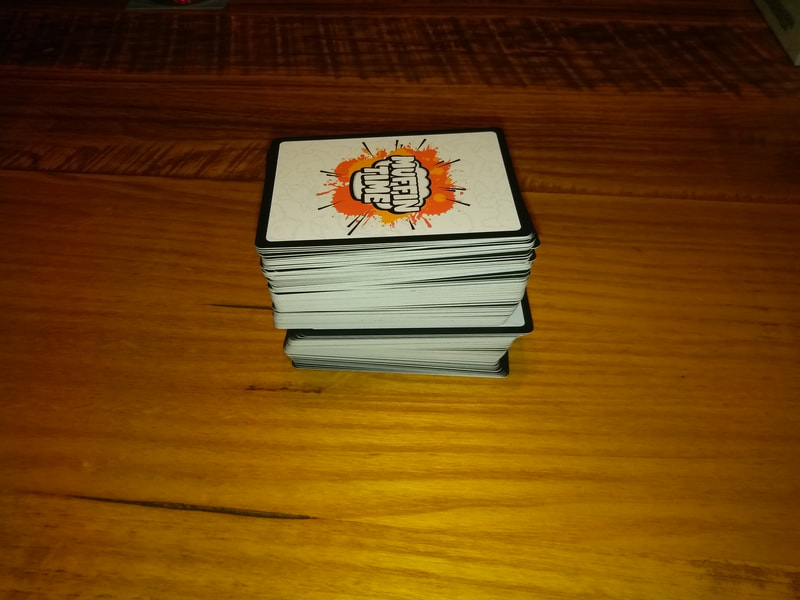
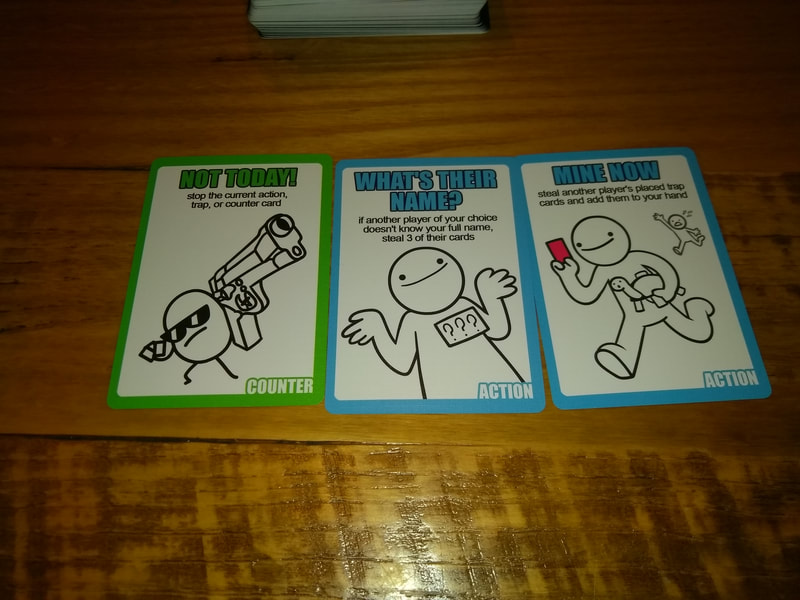
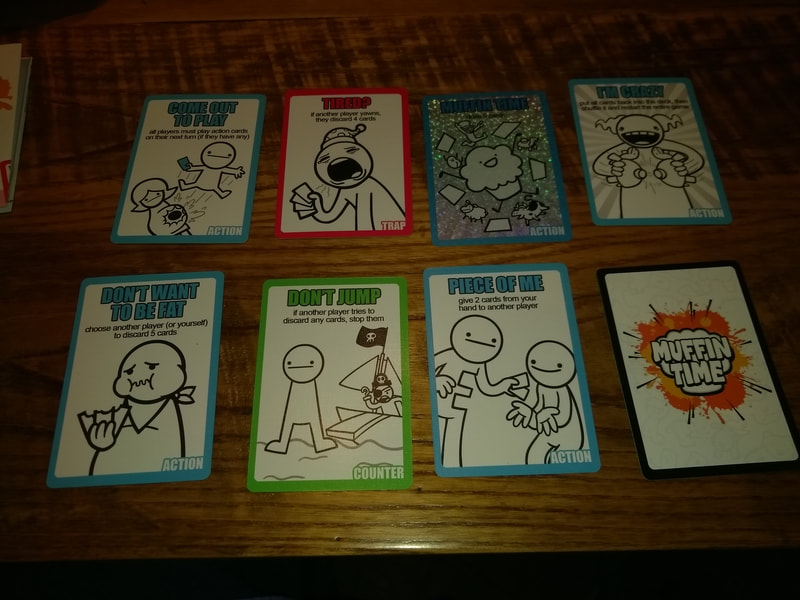
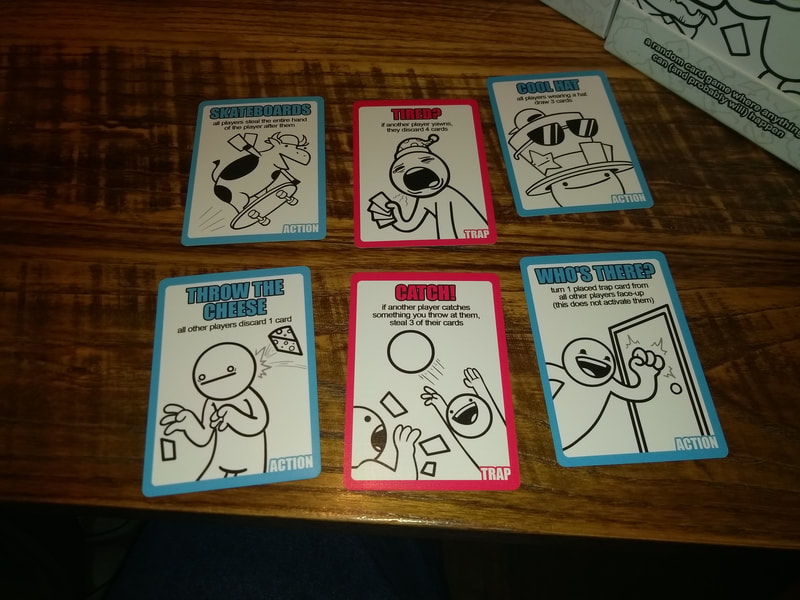
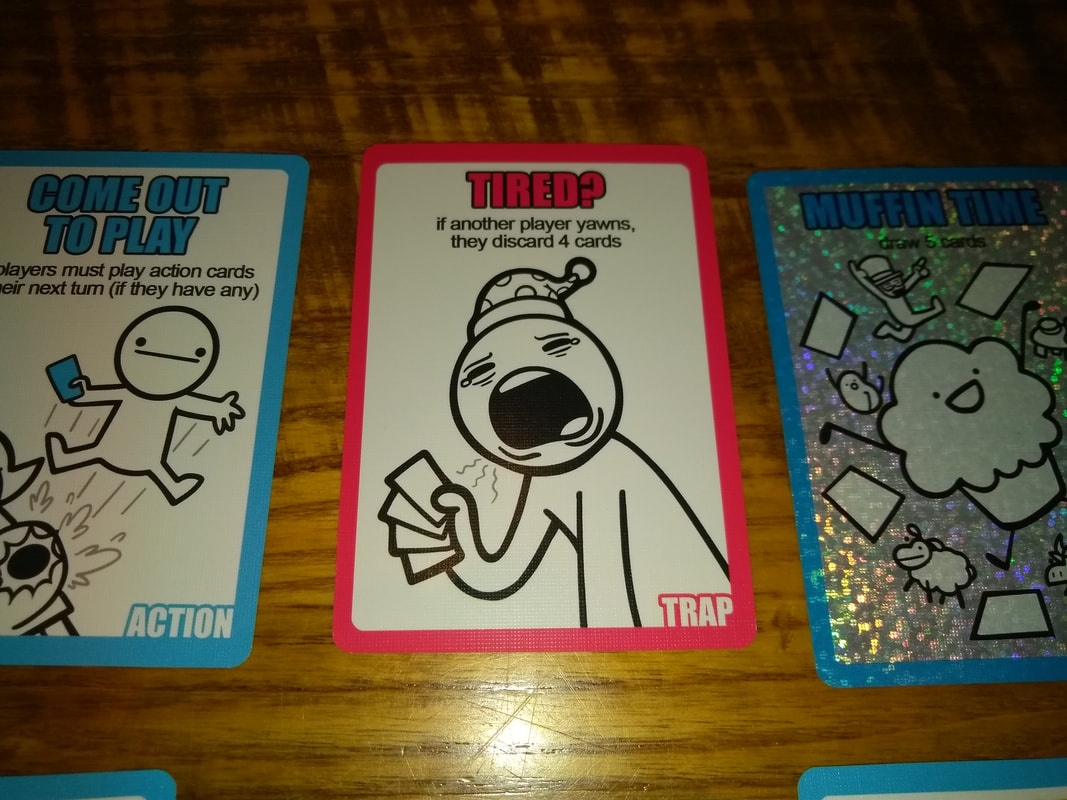
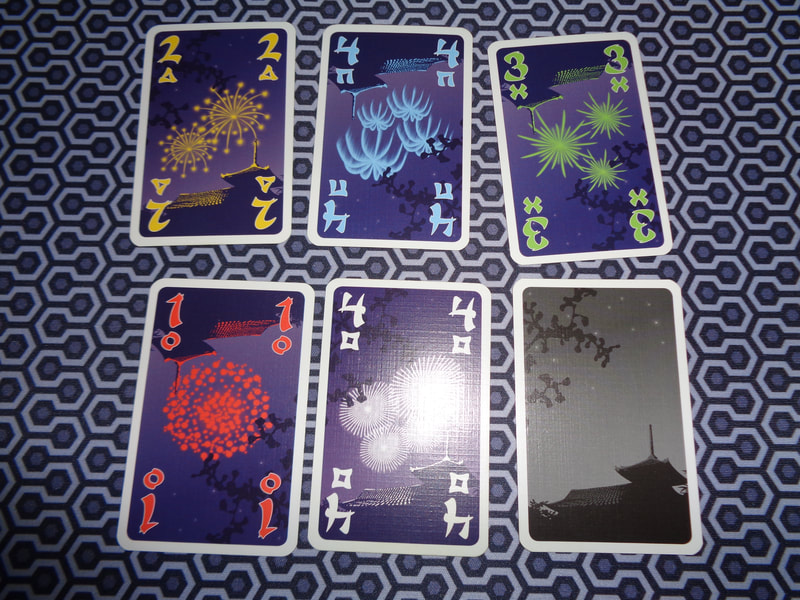

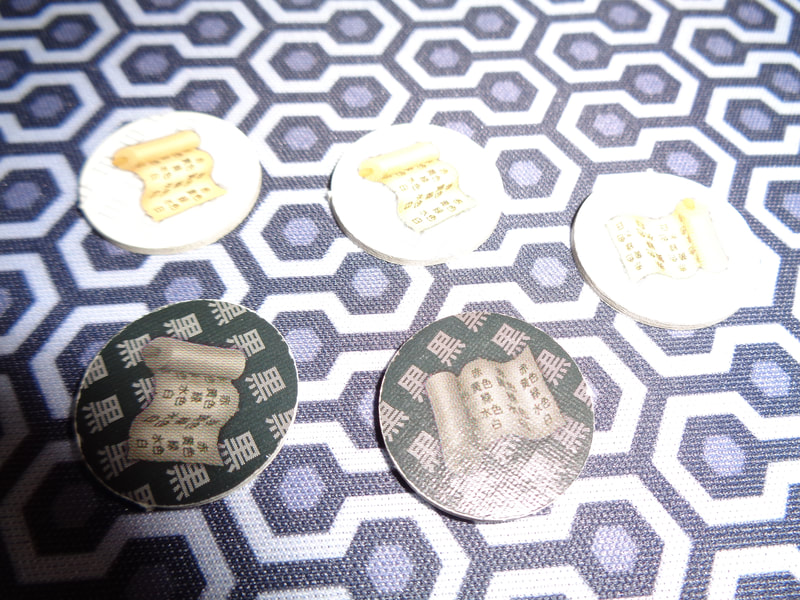

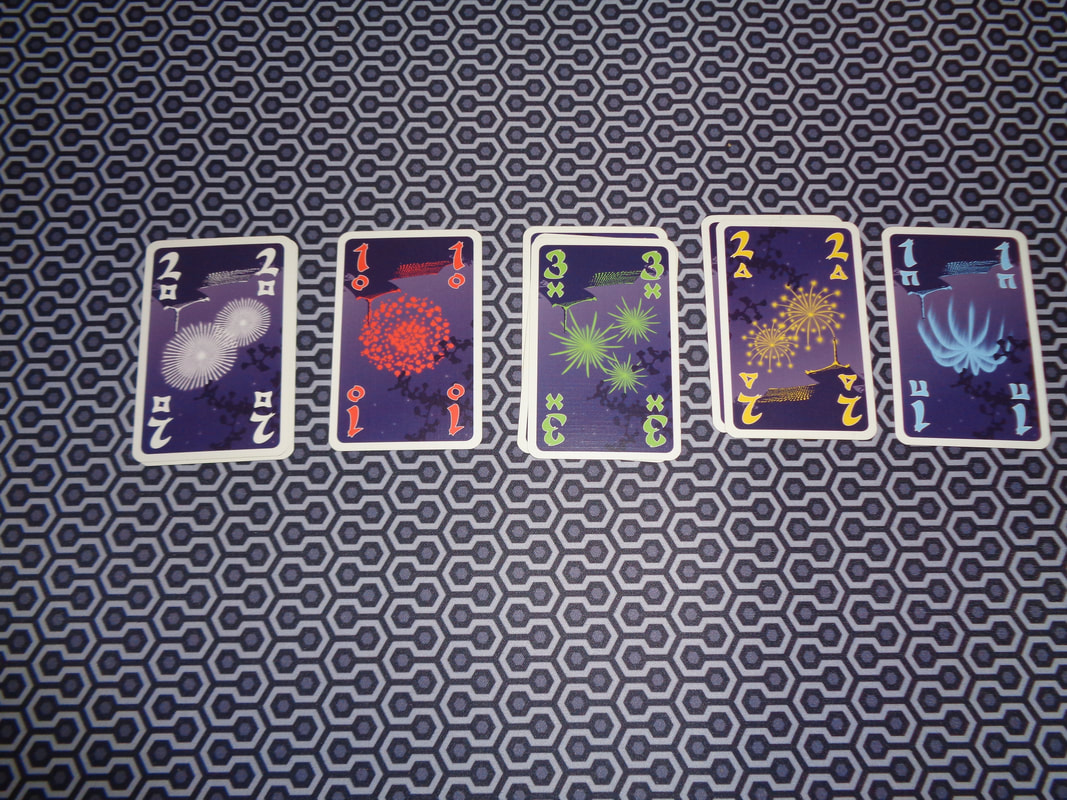
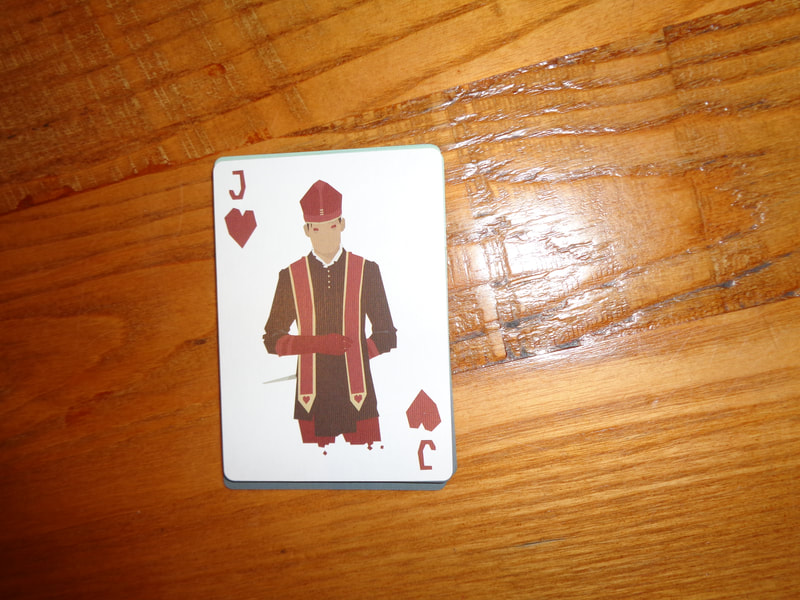
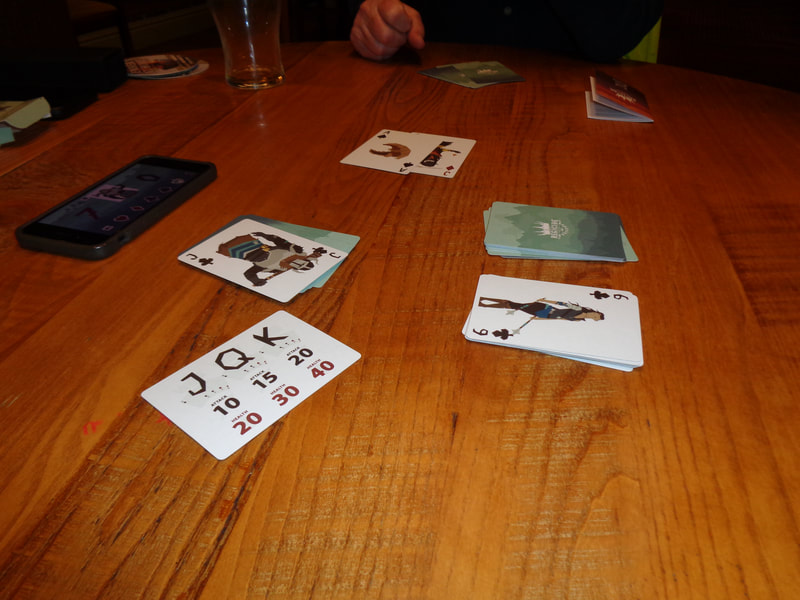
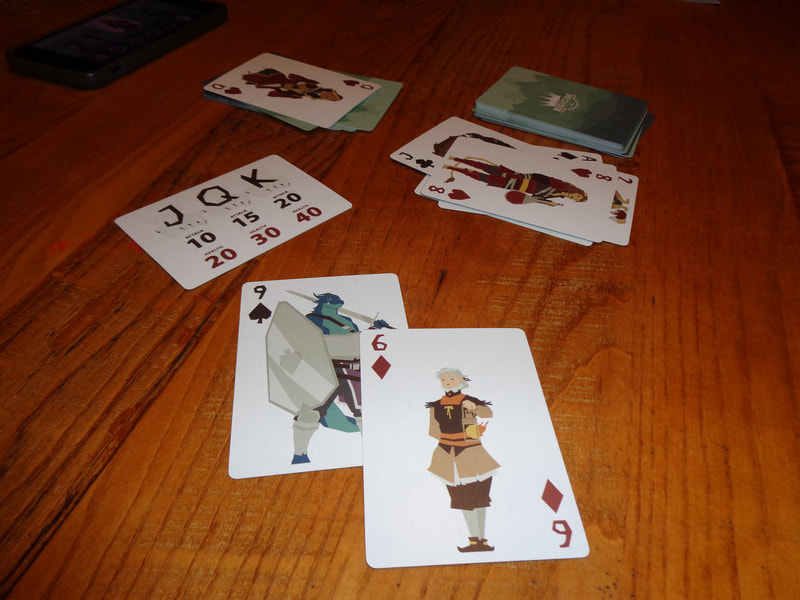
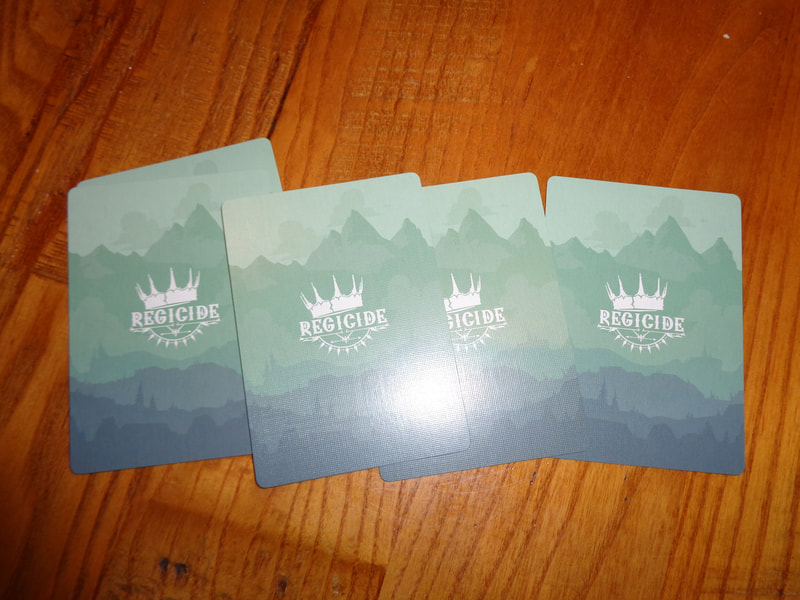
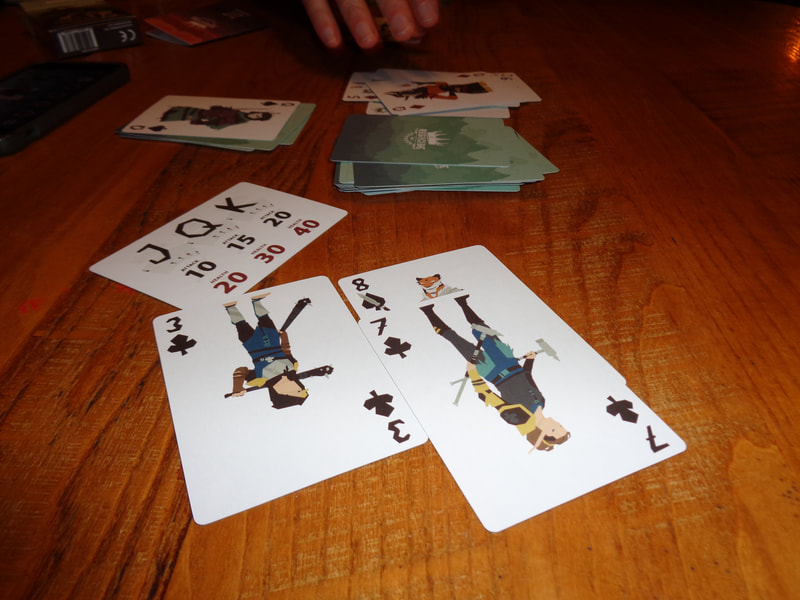
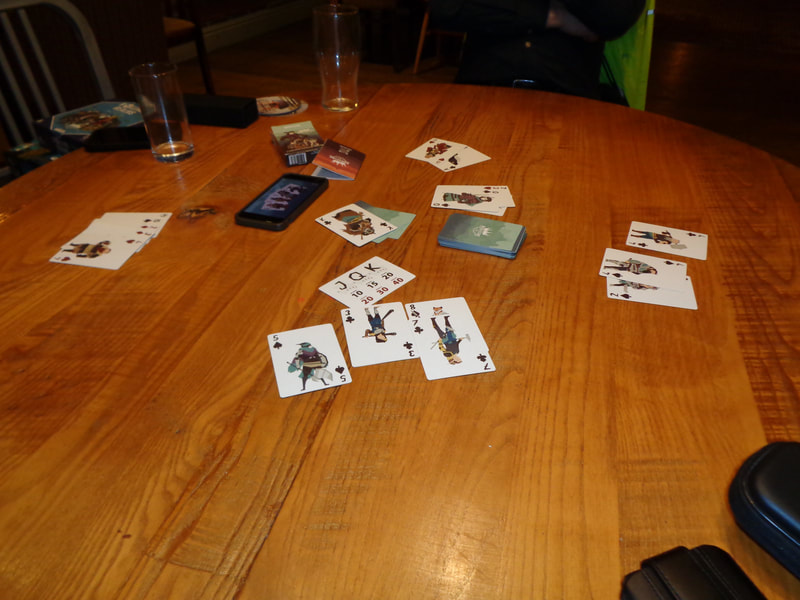
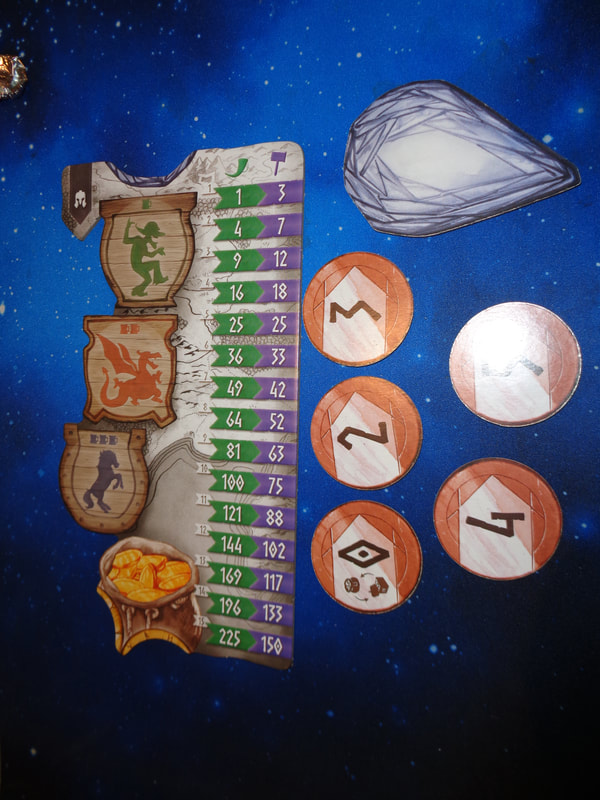
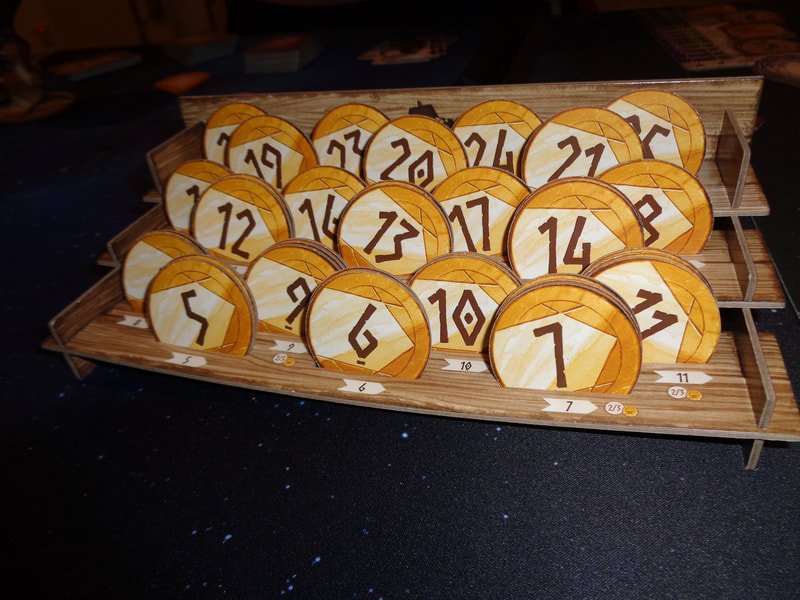
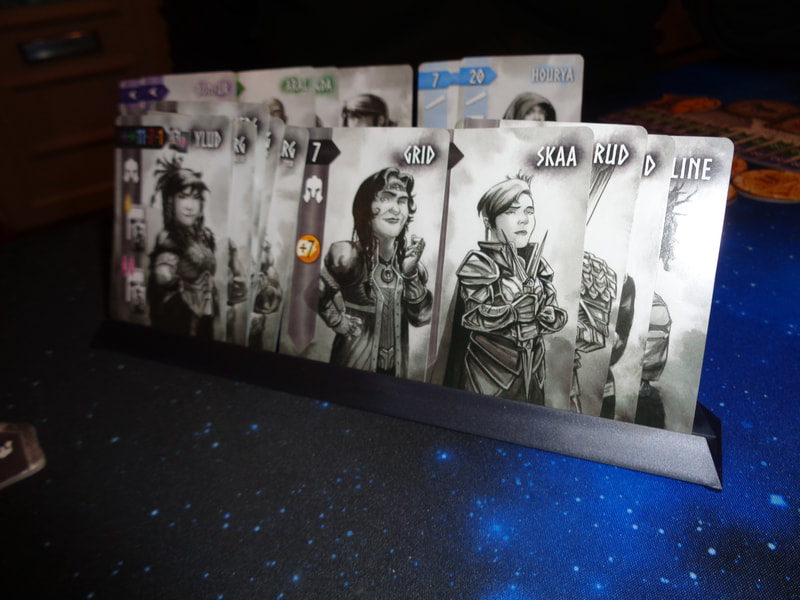
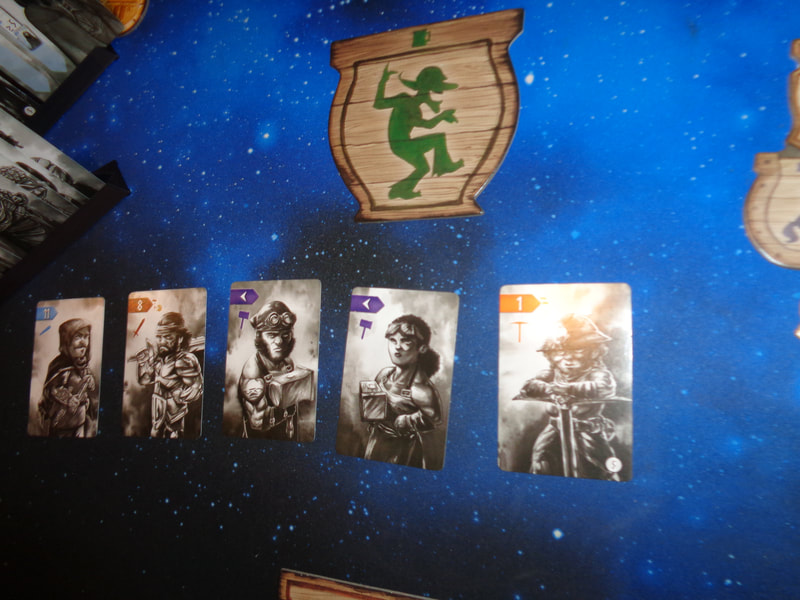
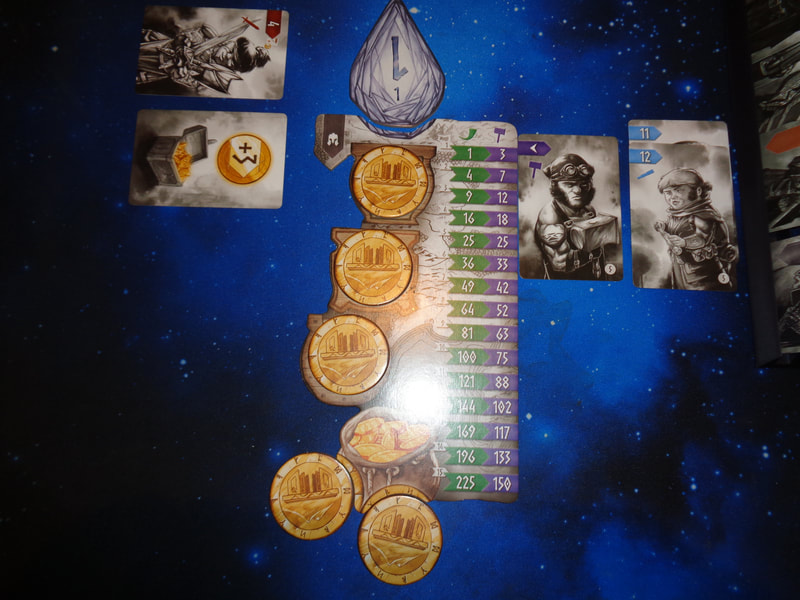
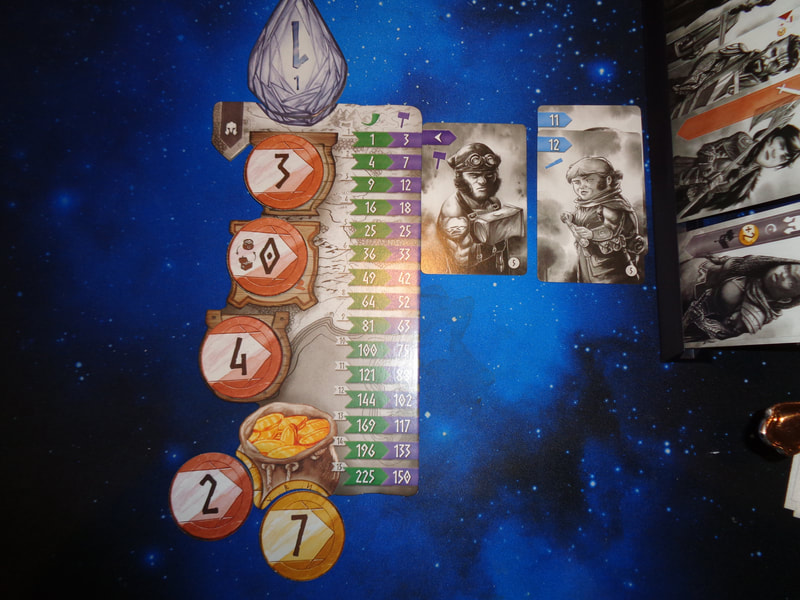
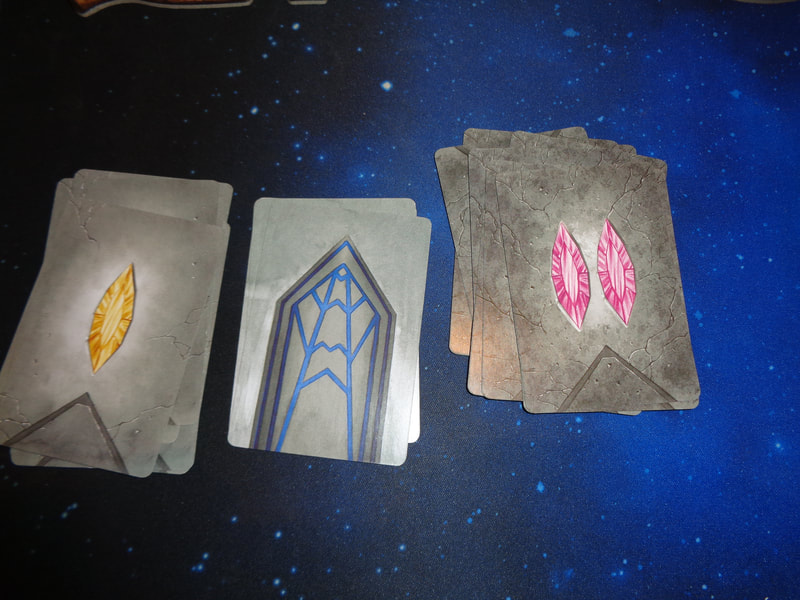
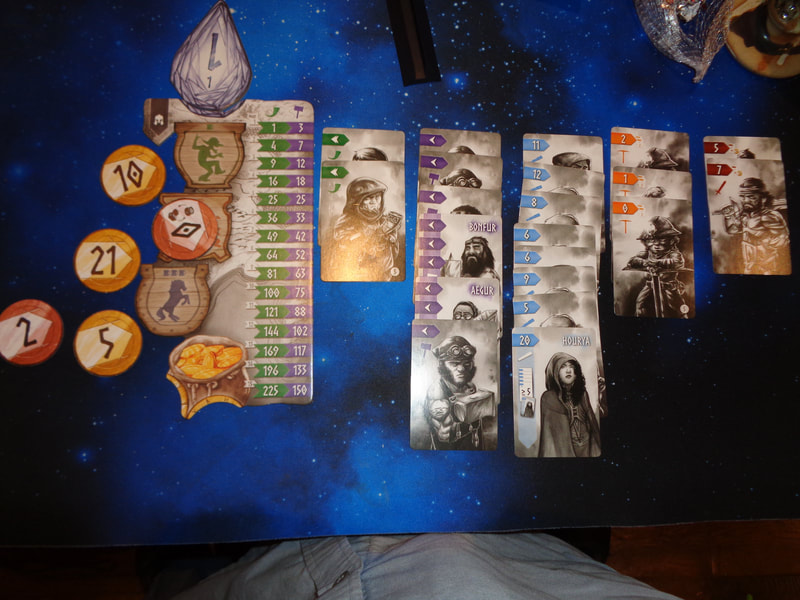
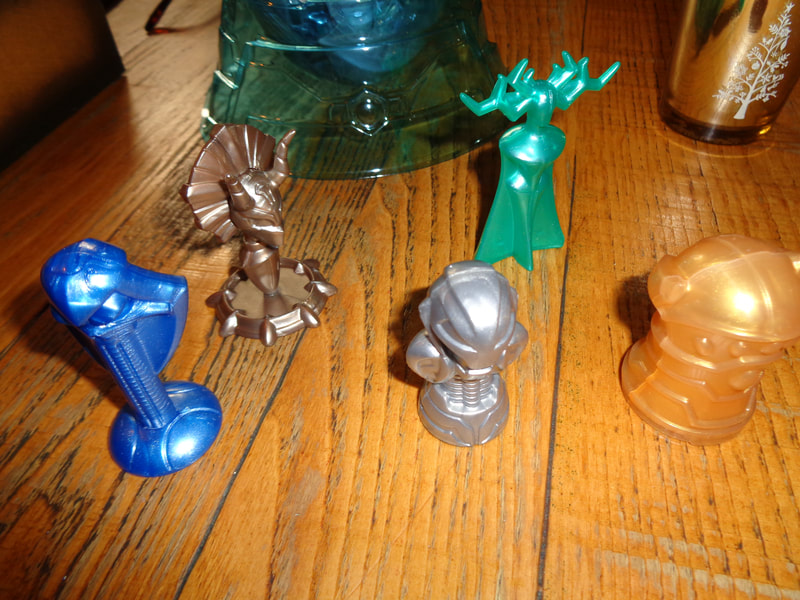
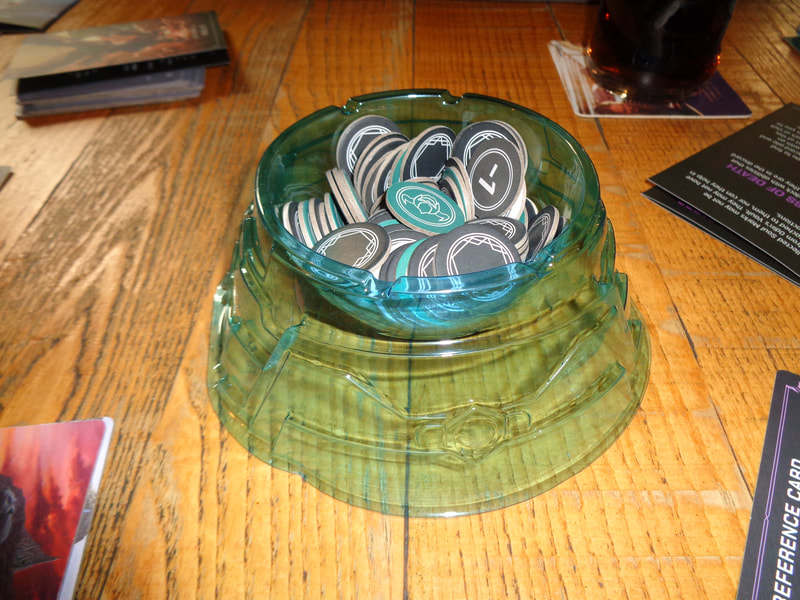
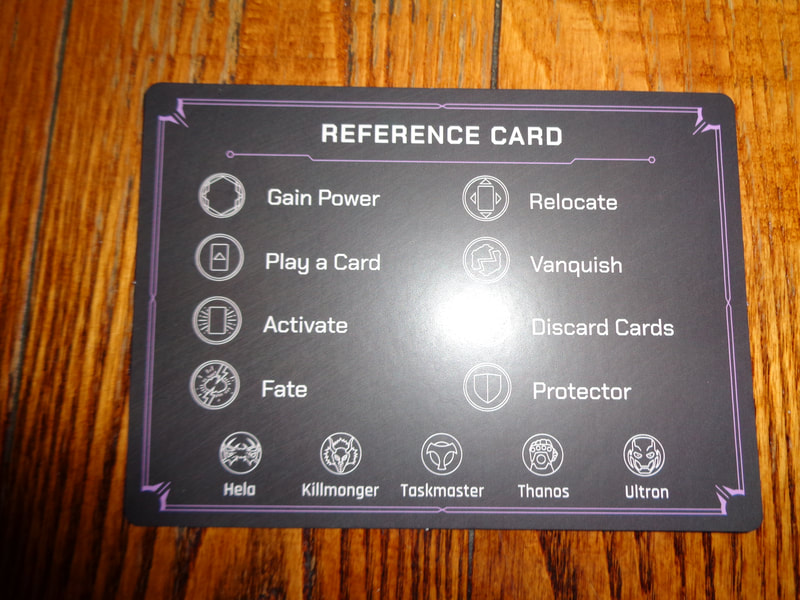
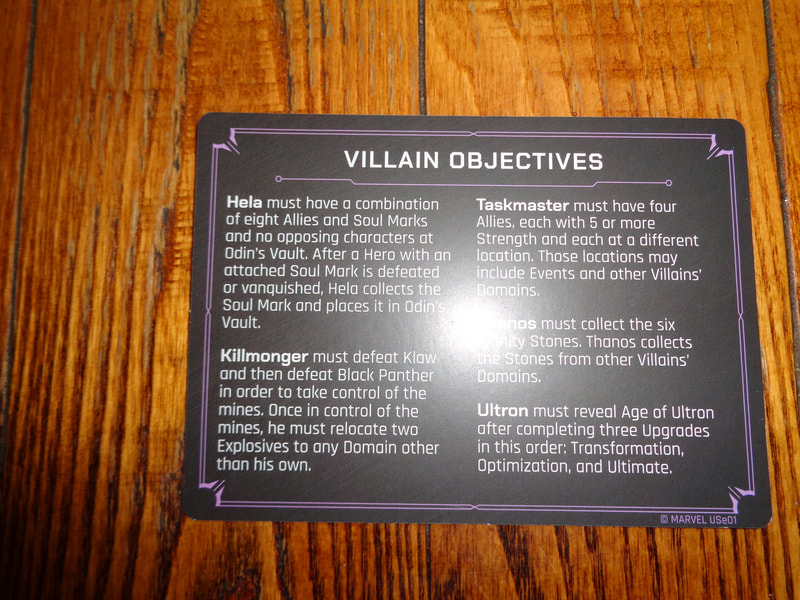
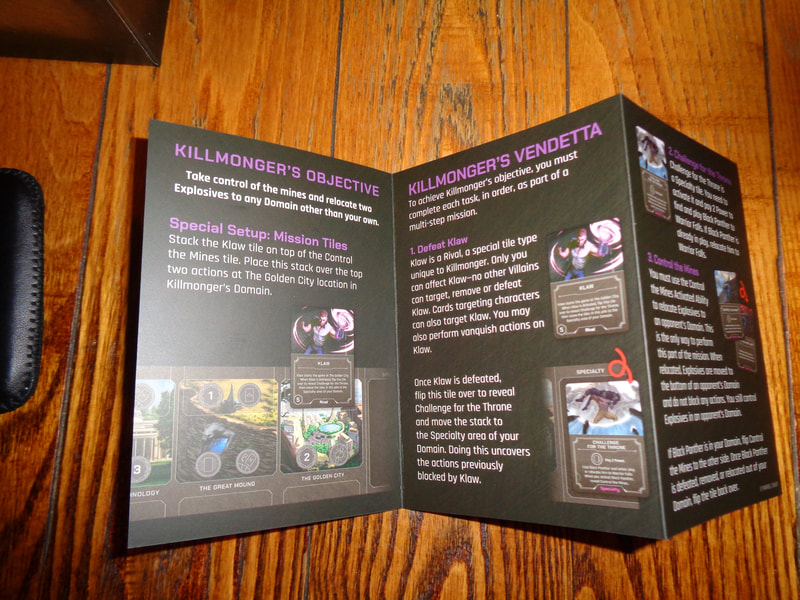
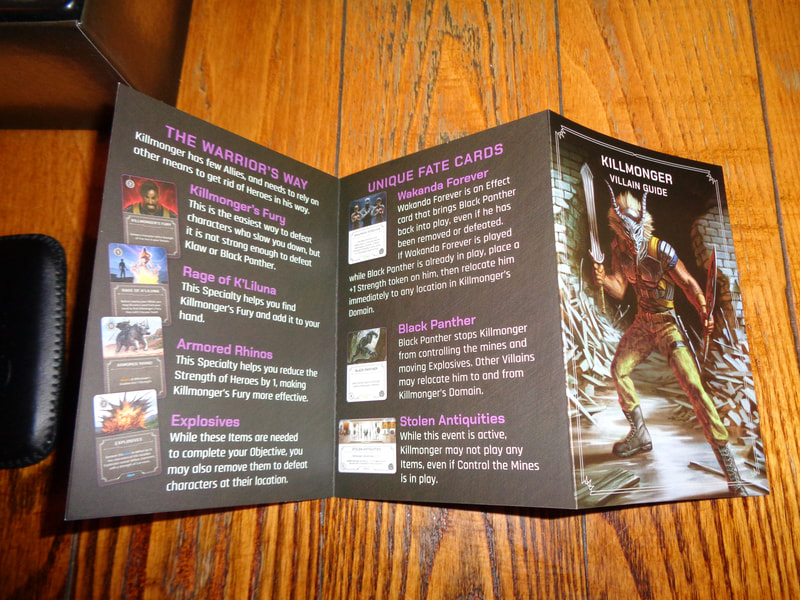
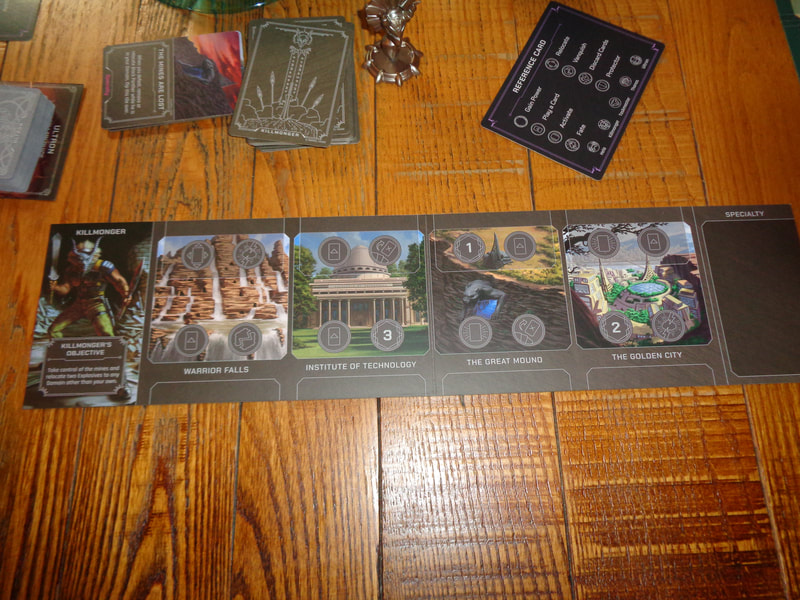
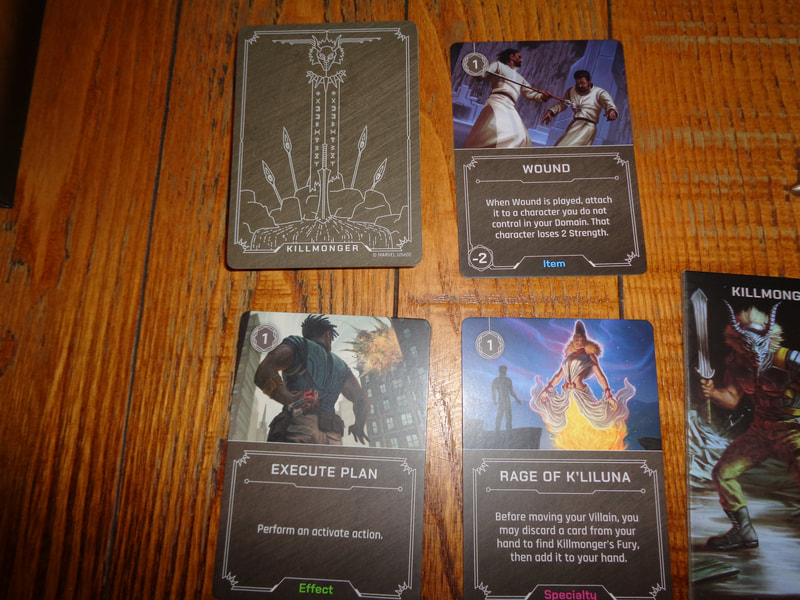
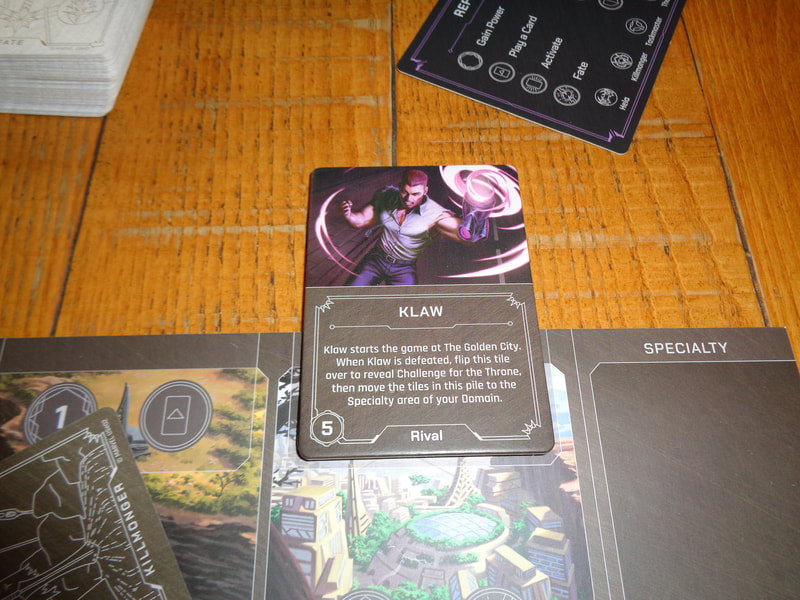
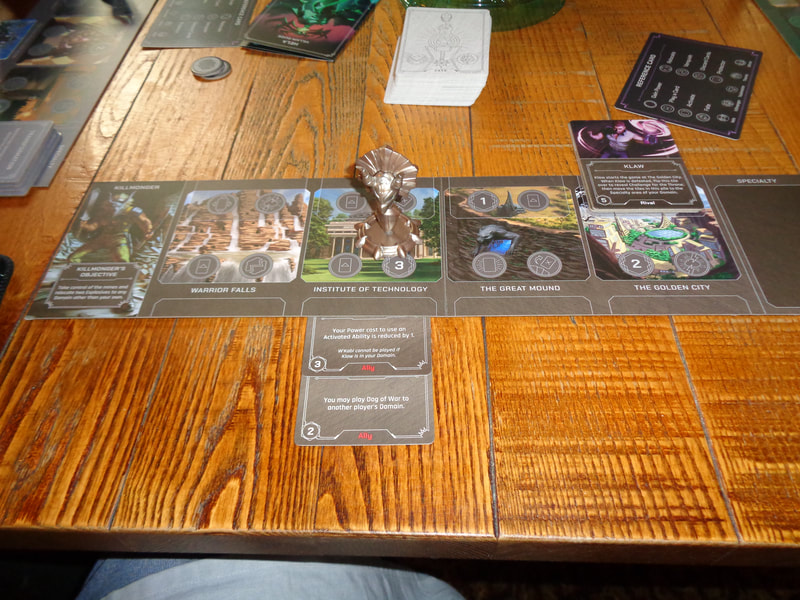
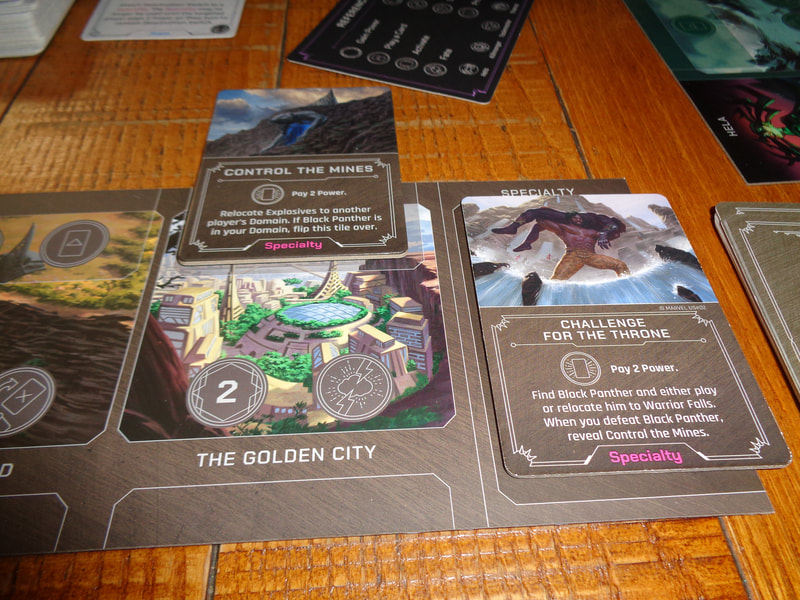
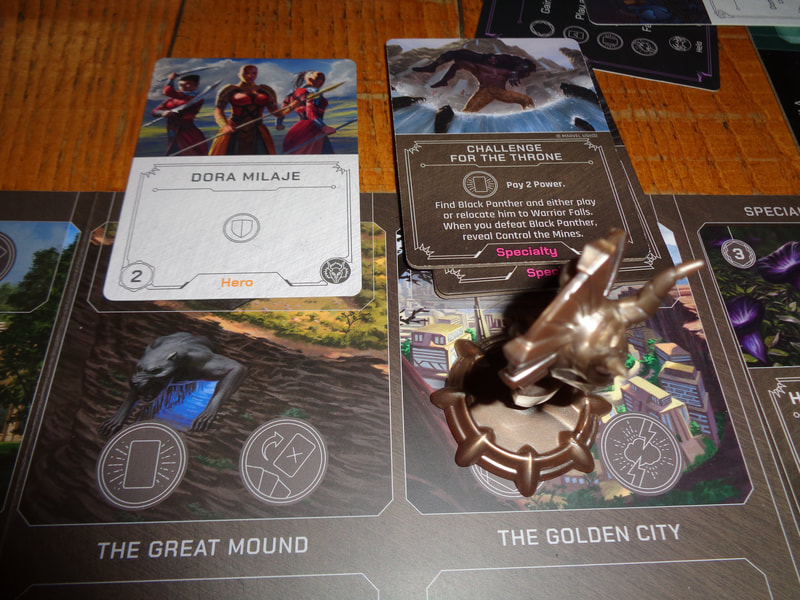
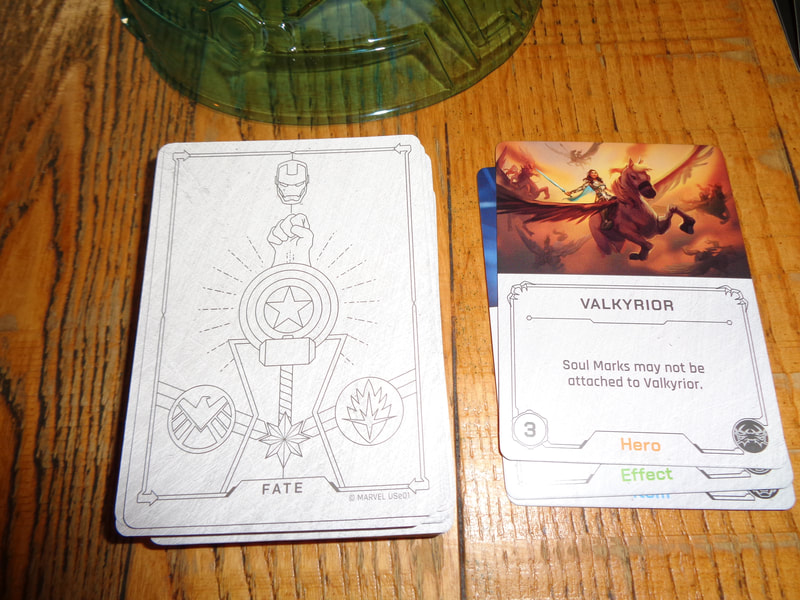
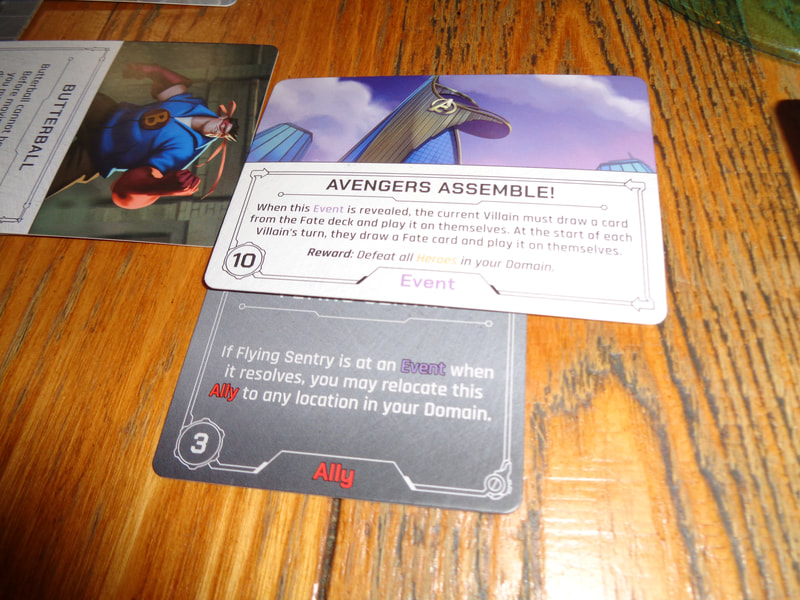
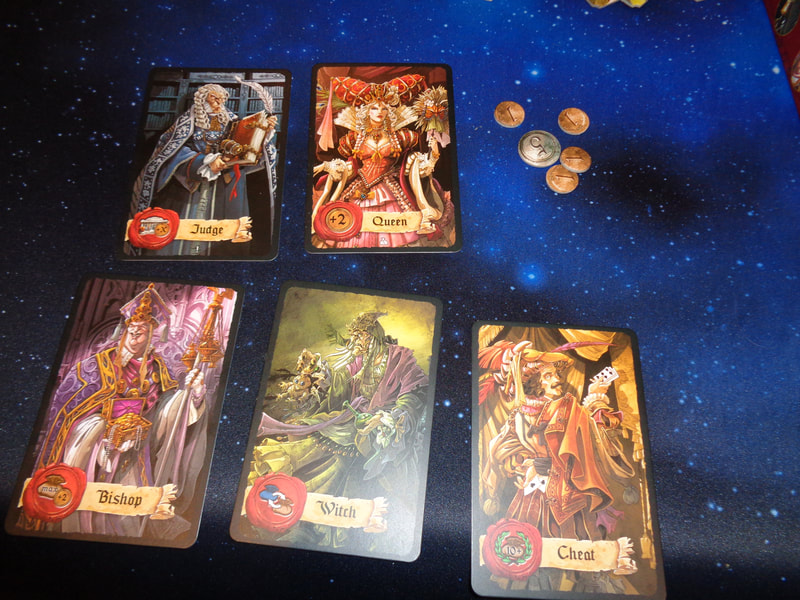
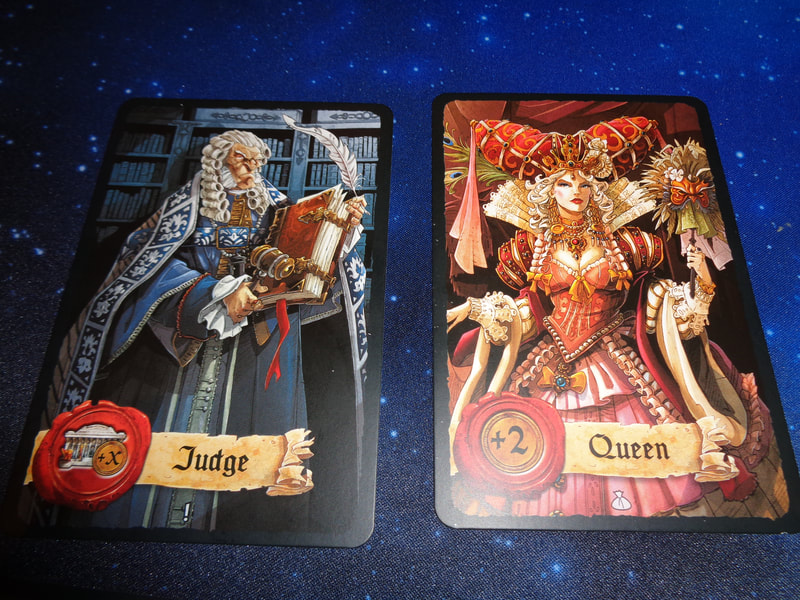
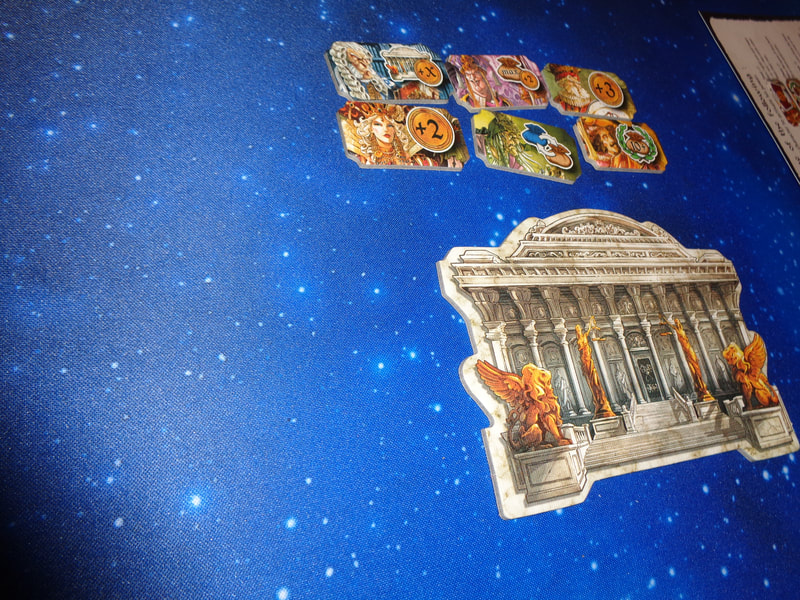
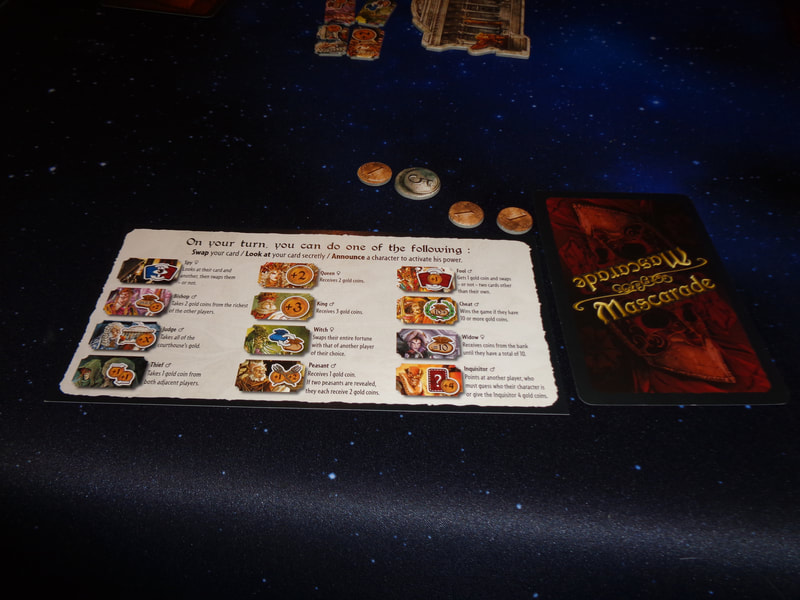
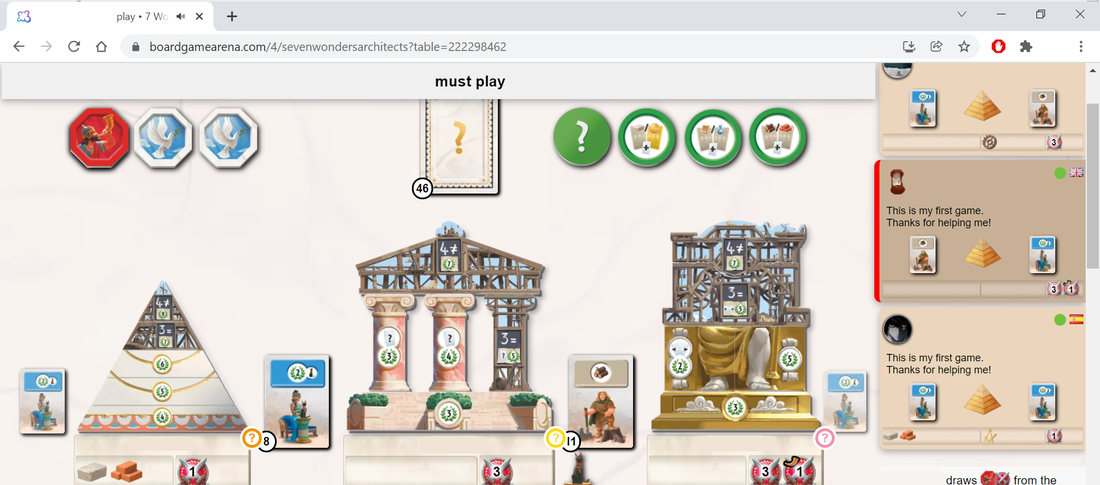
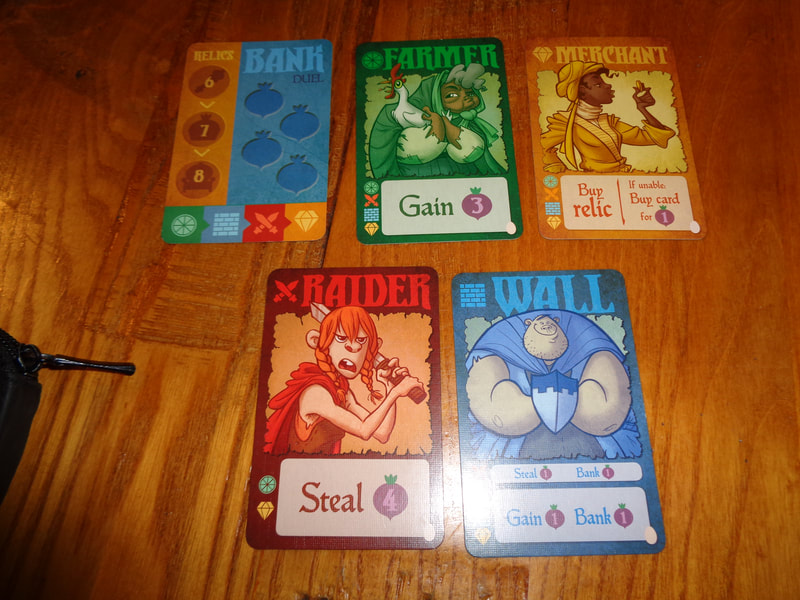
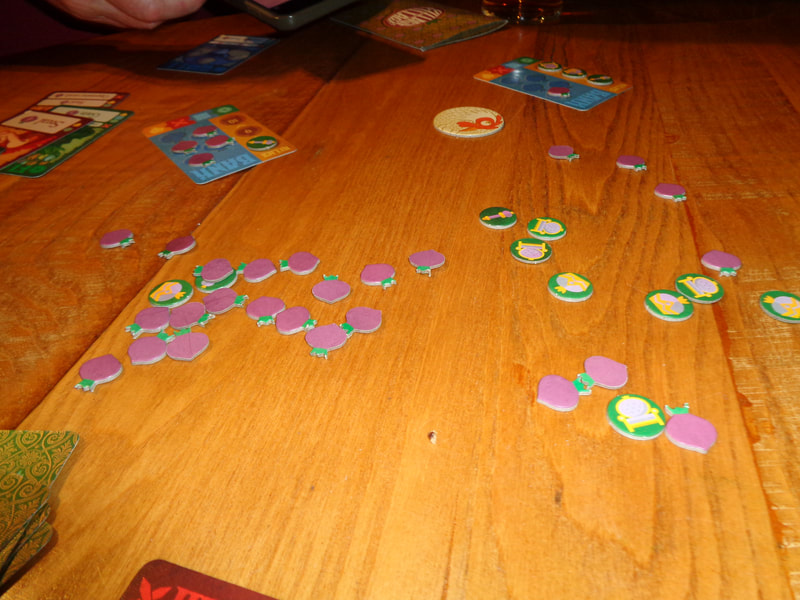
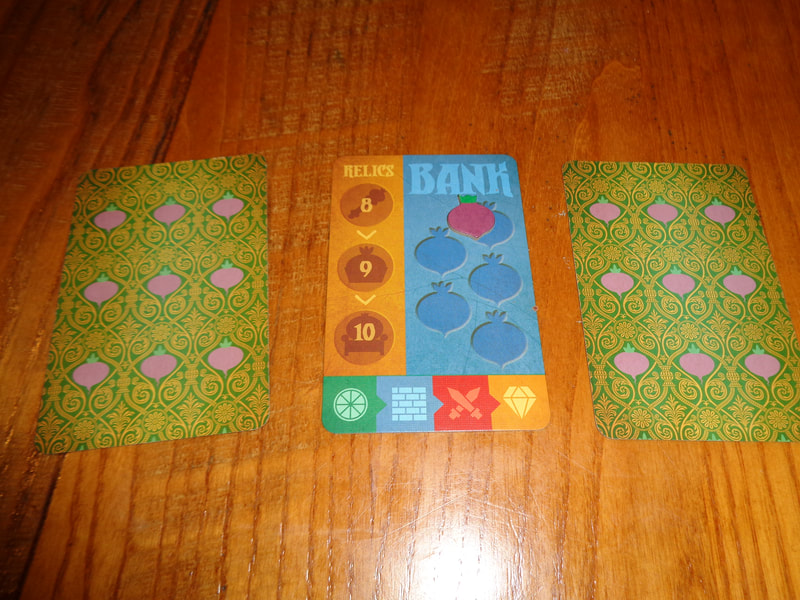
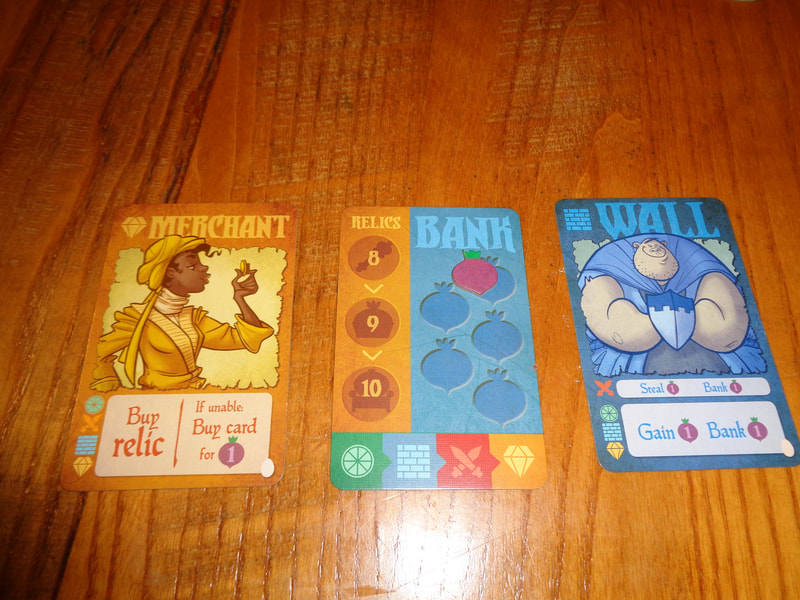
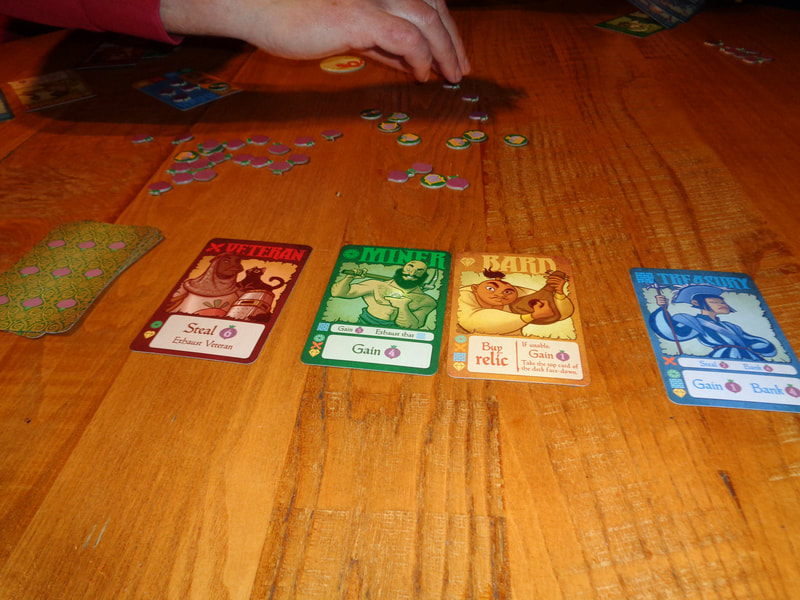
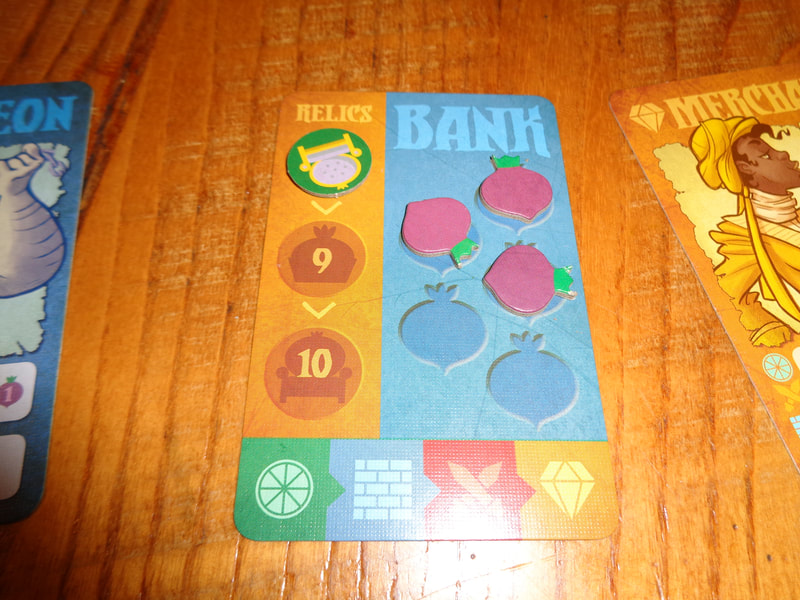
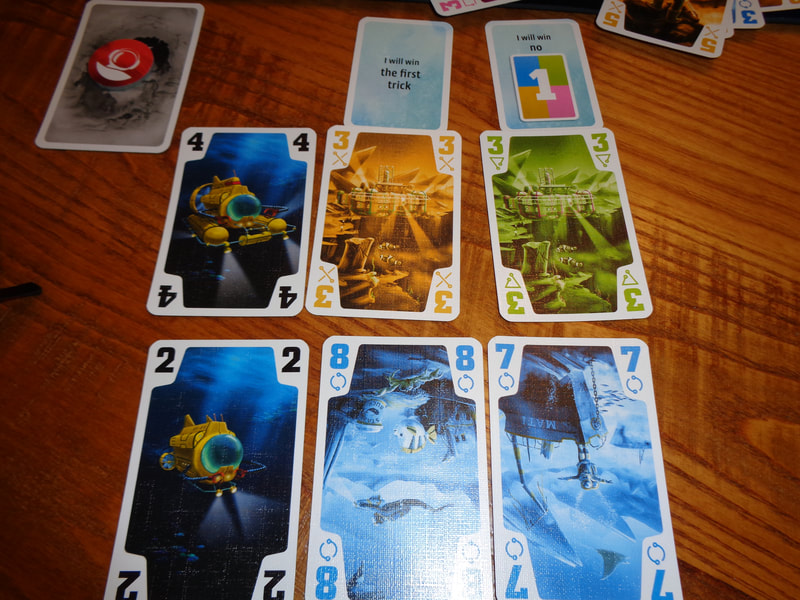
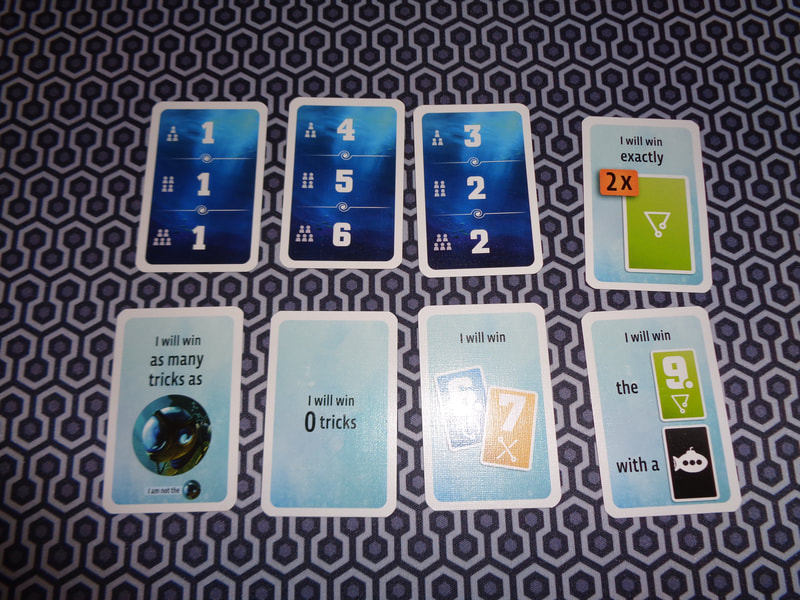
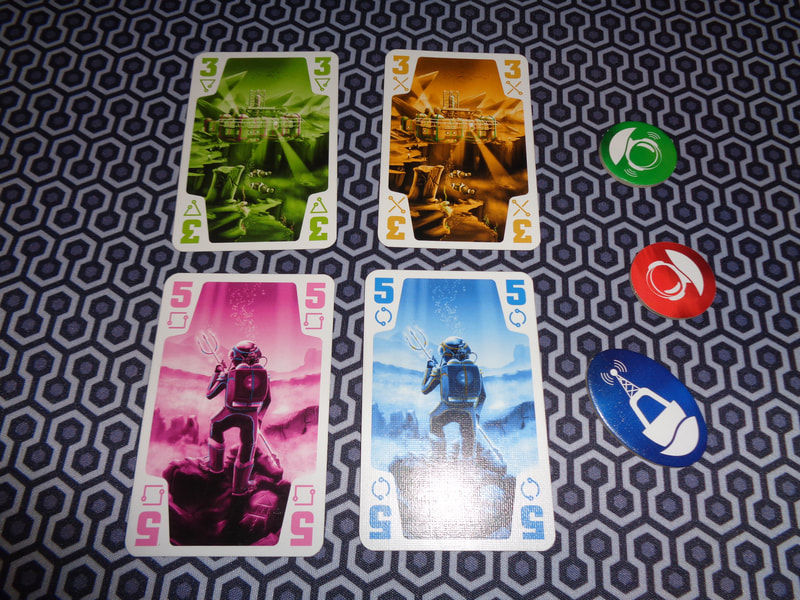
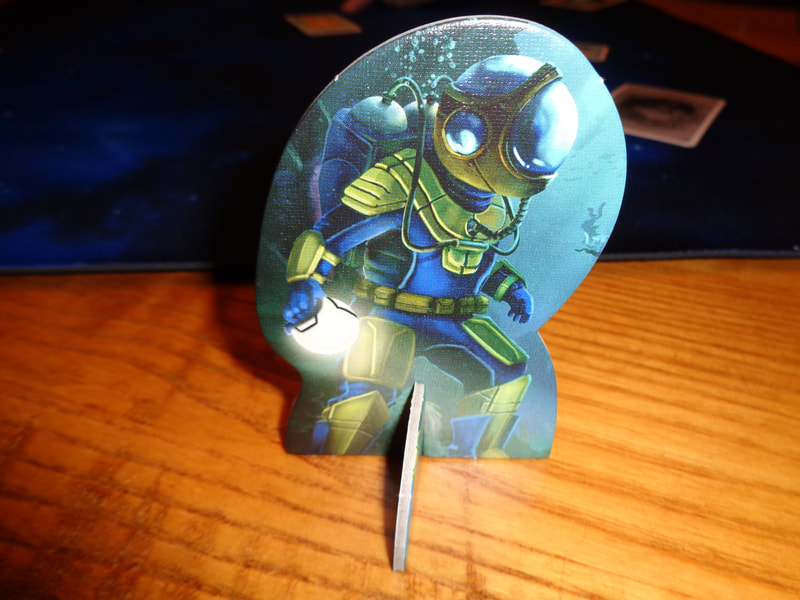
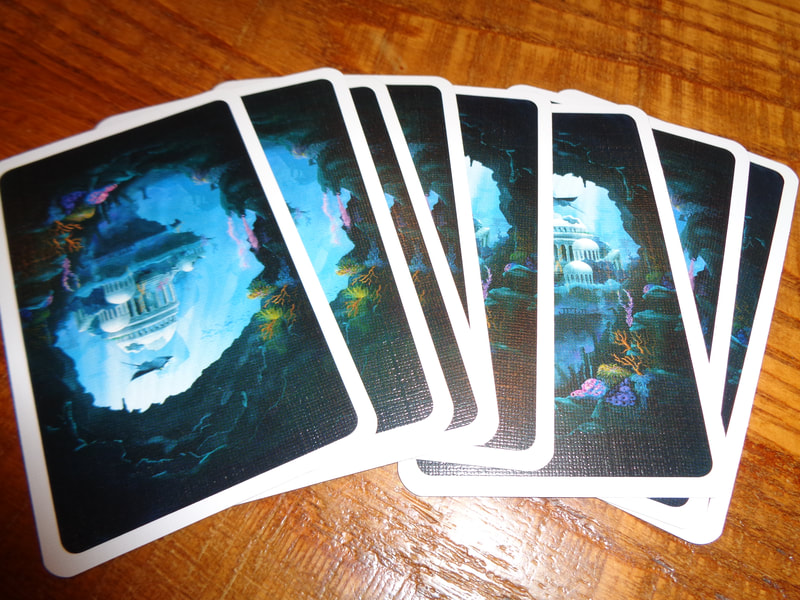
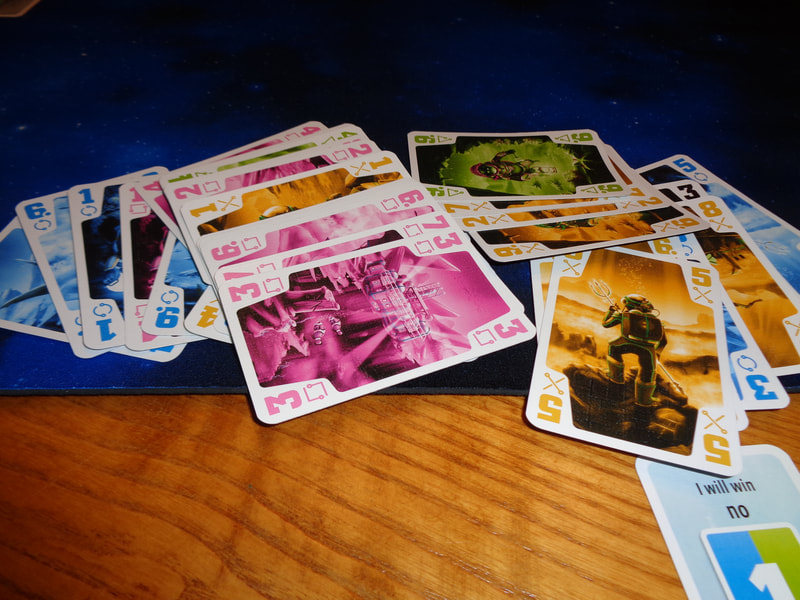
 RSS Feed
RSS Feed
